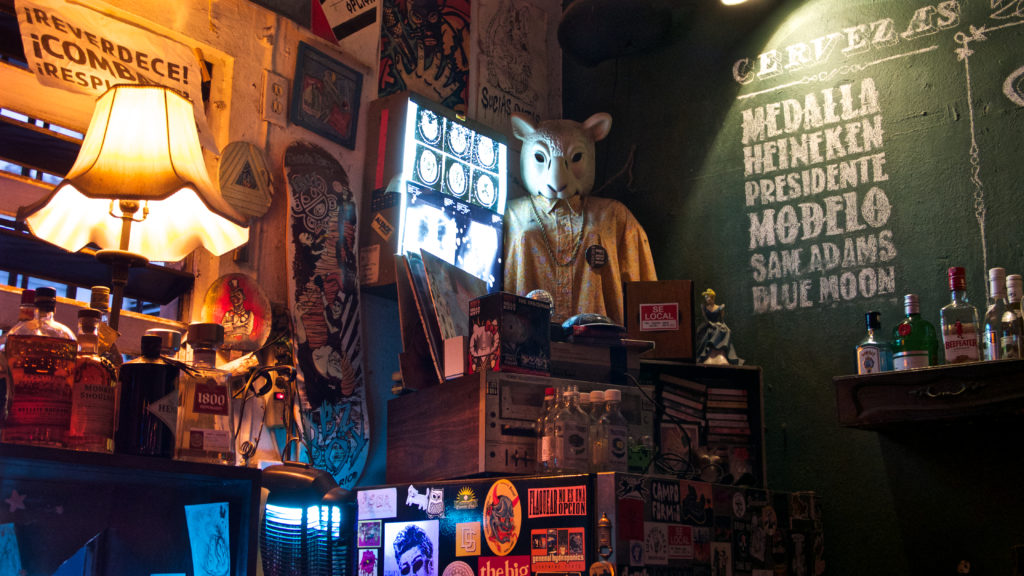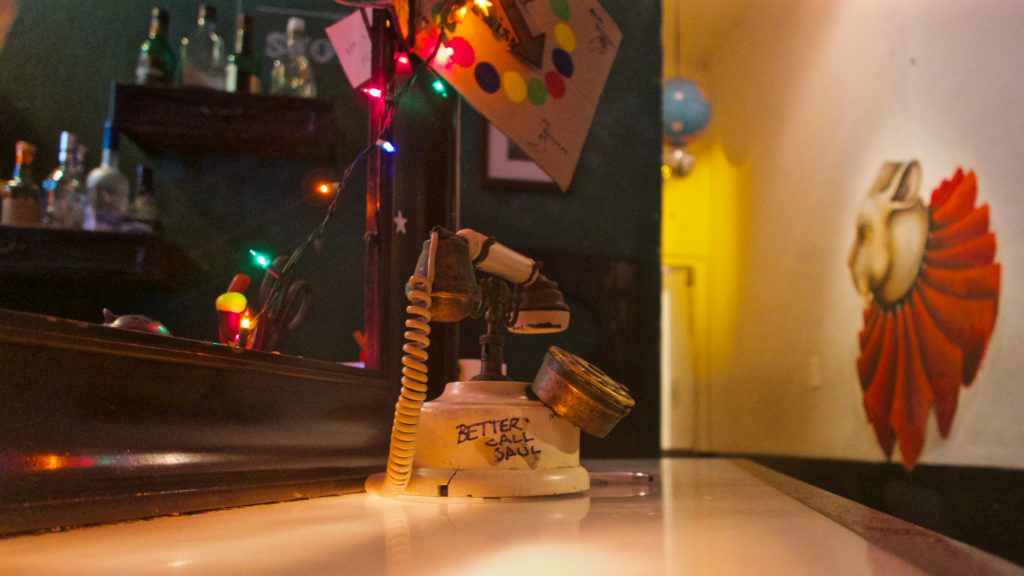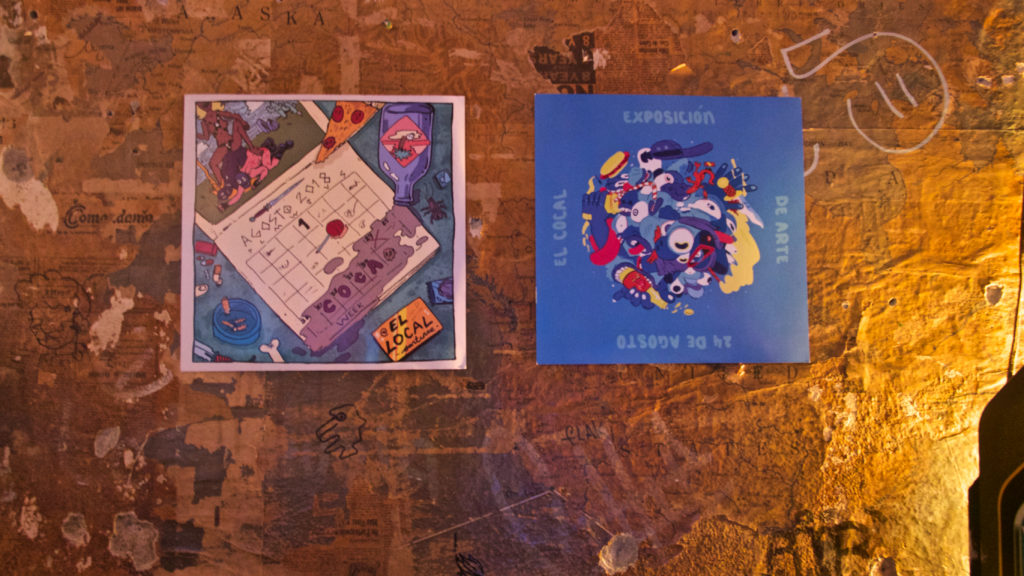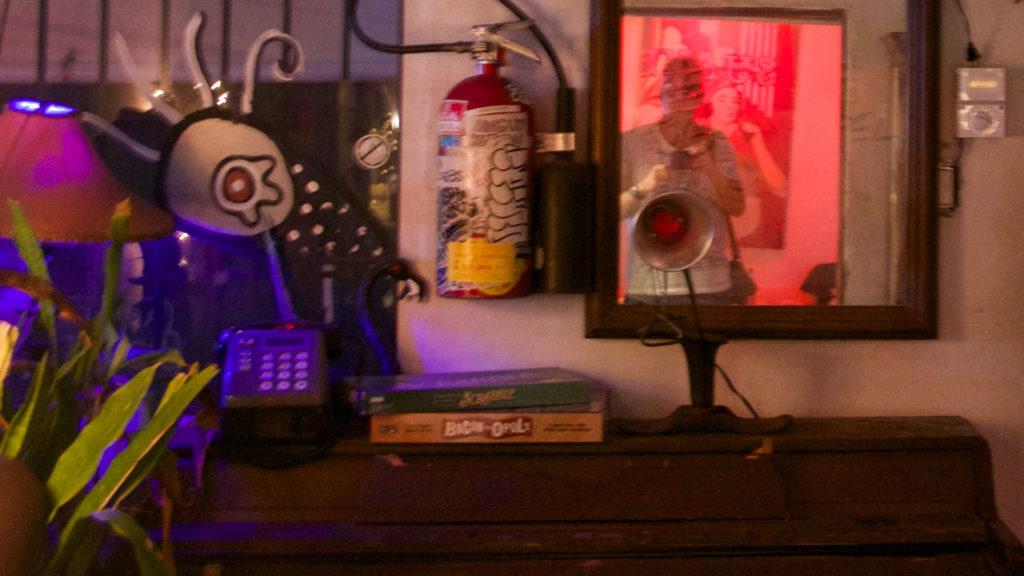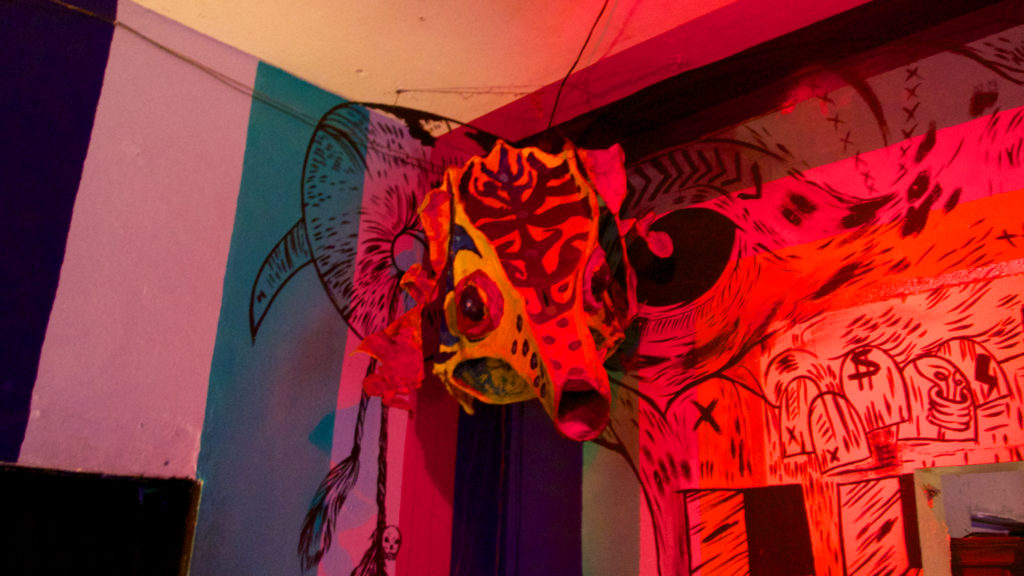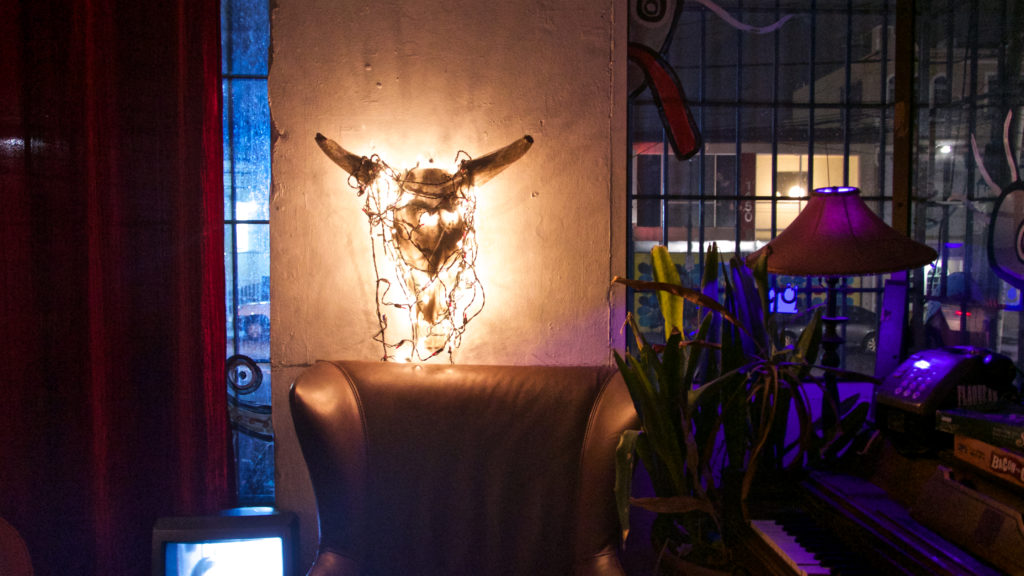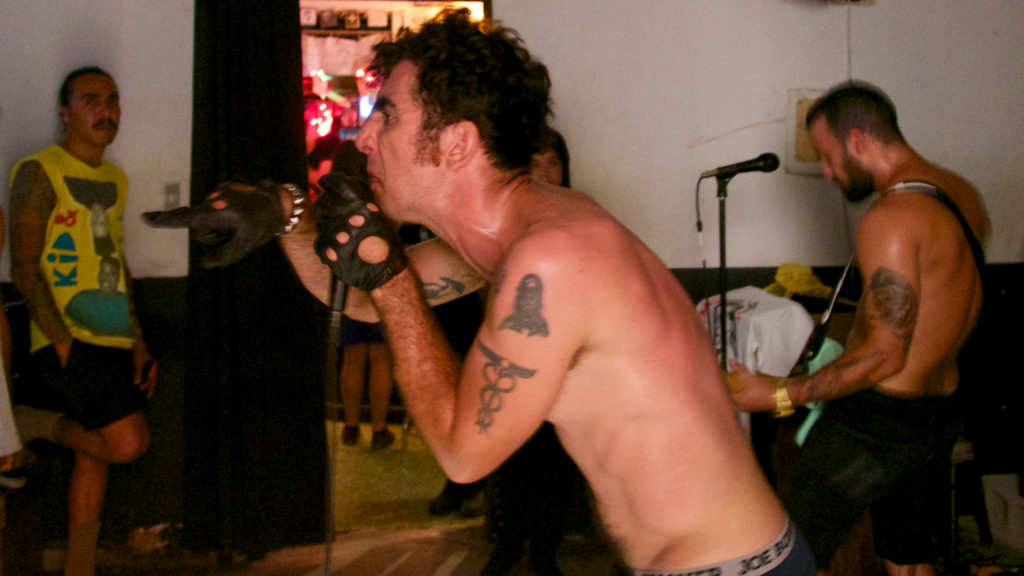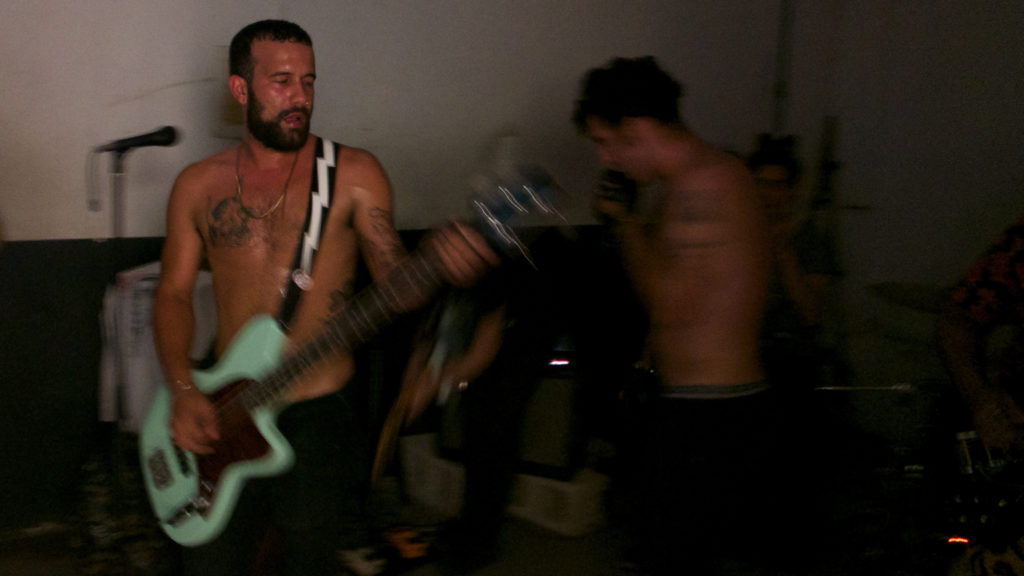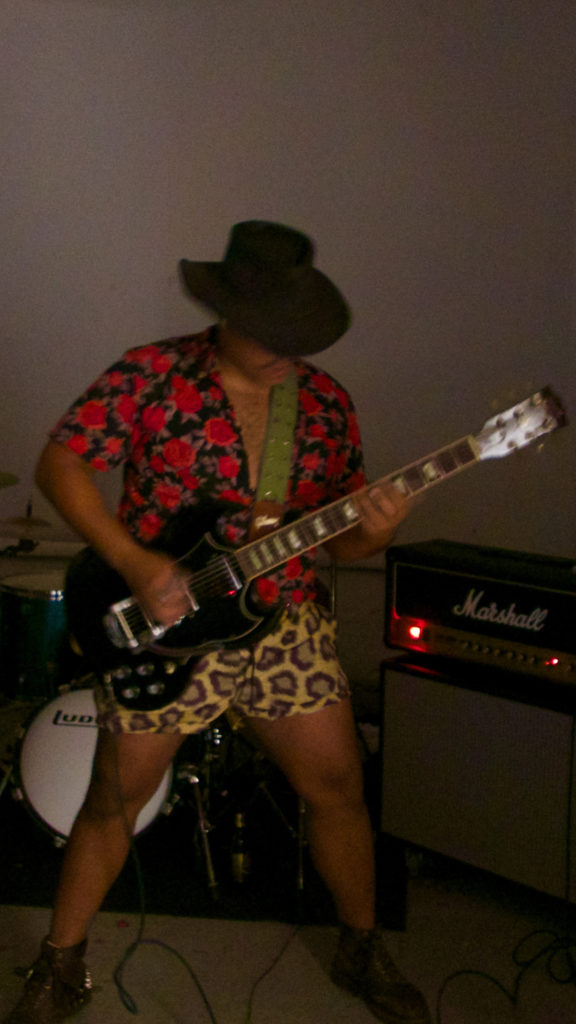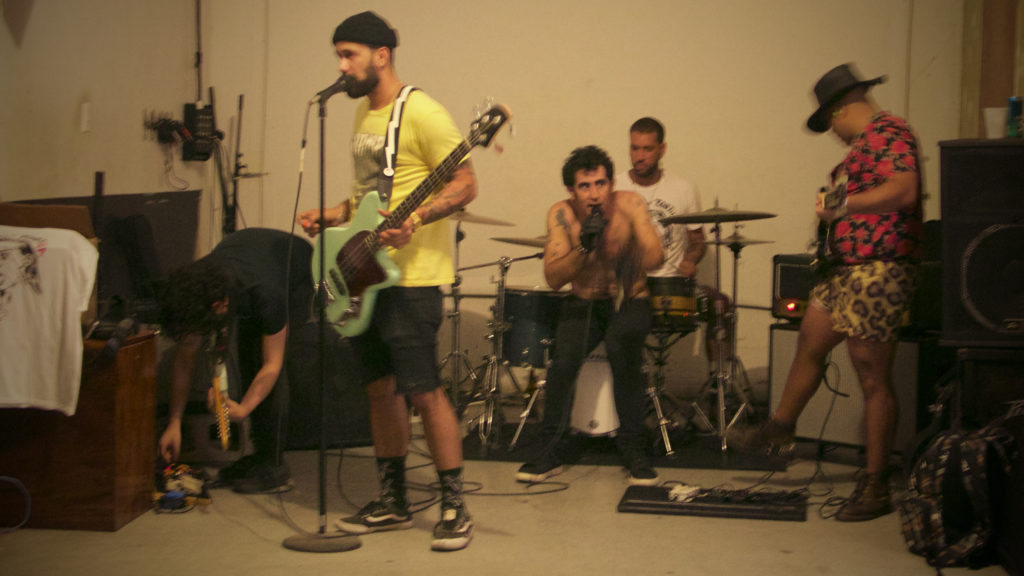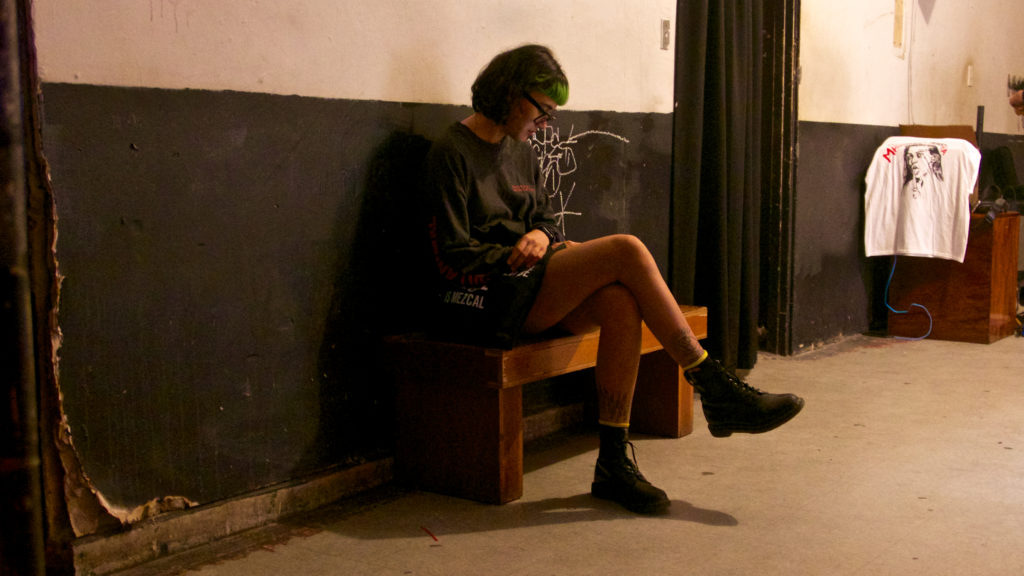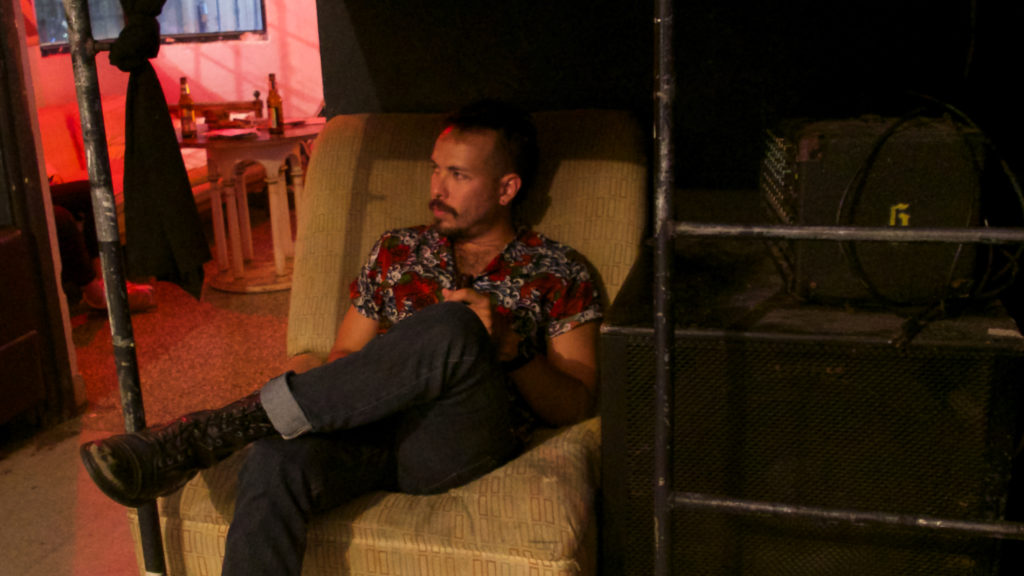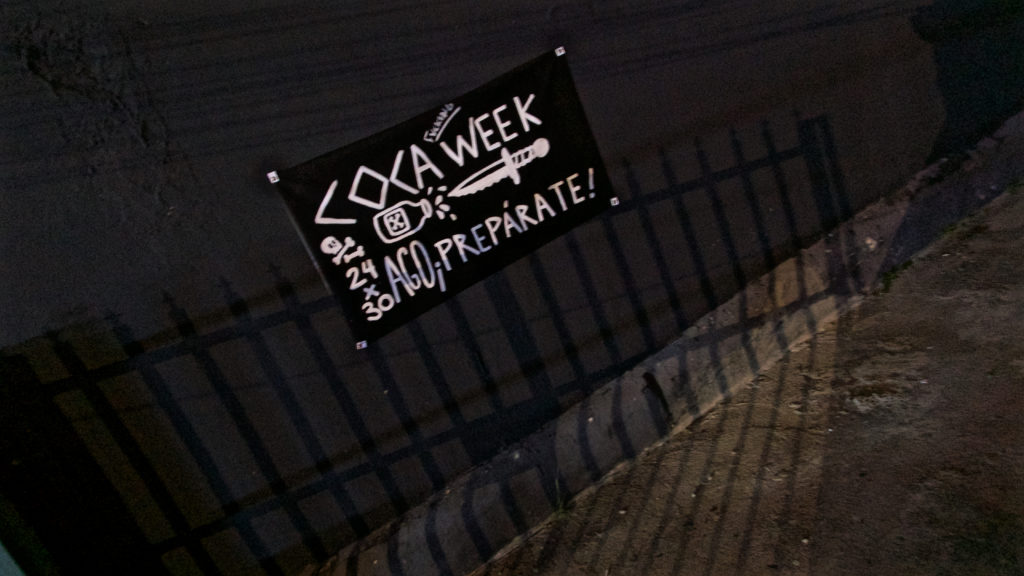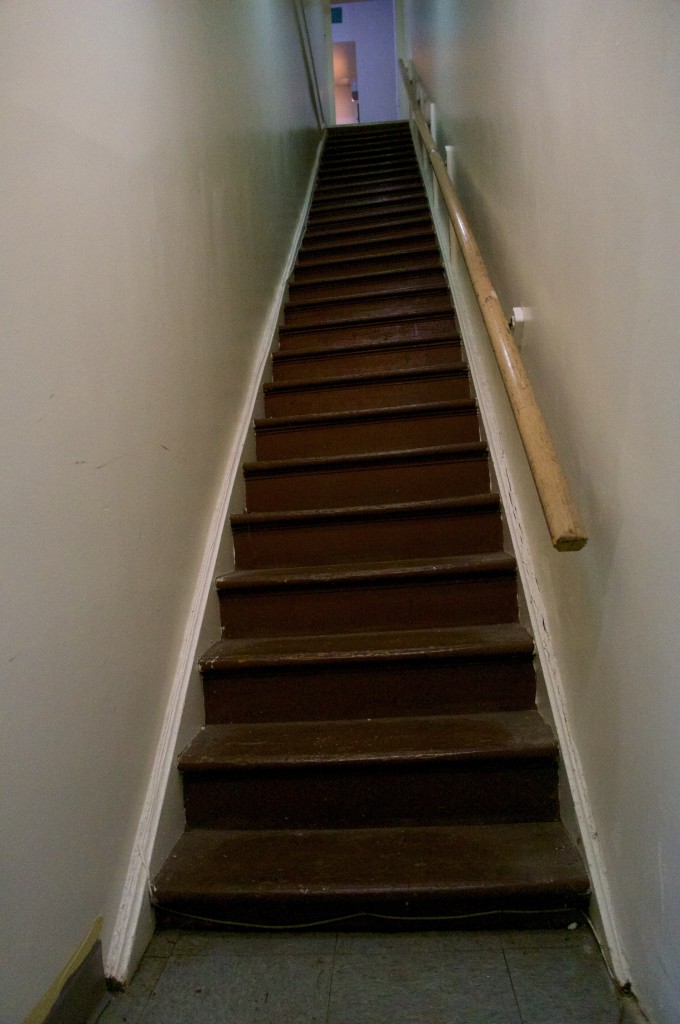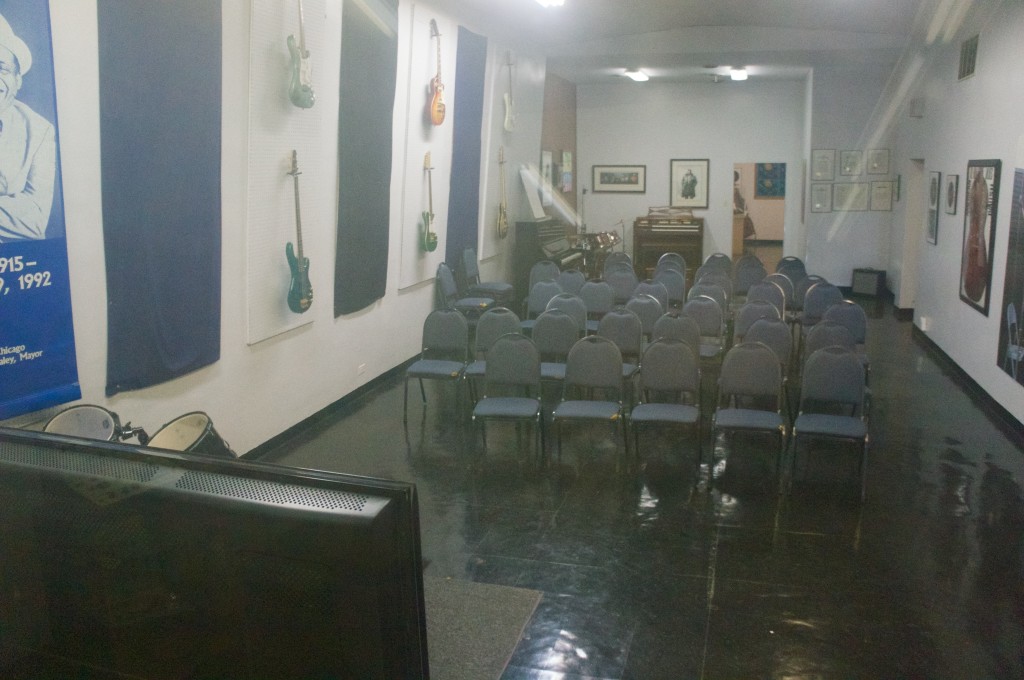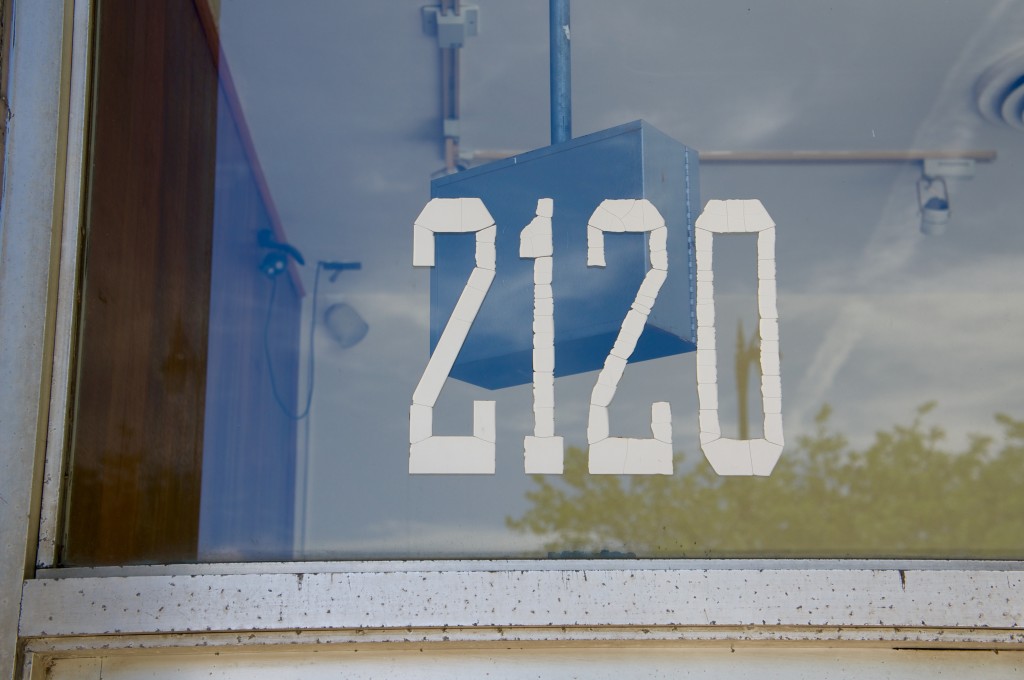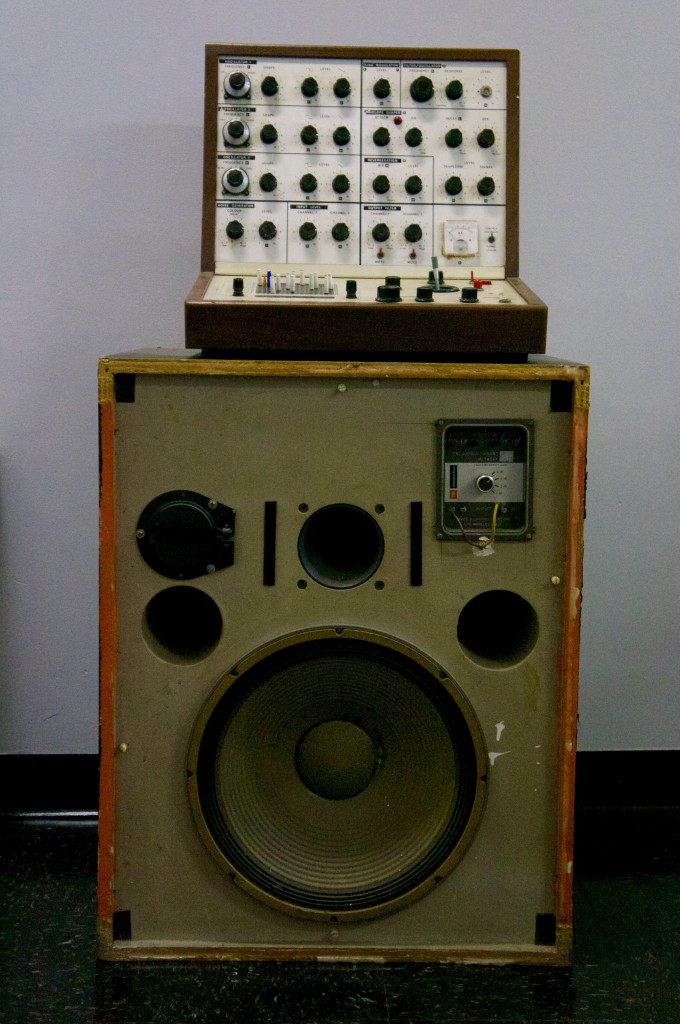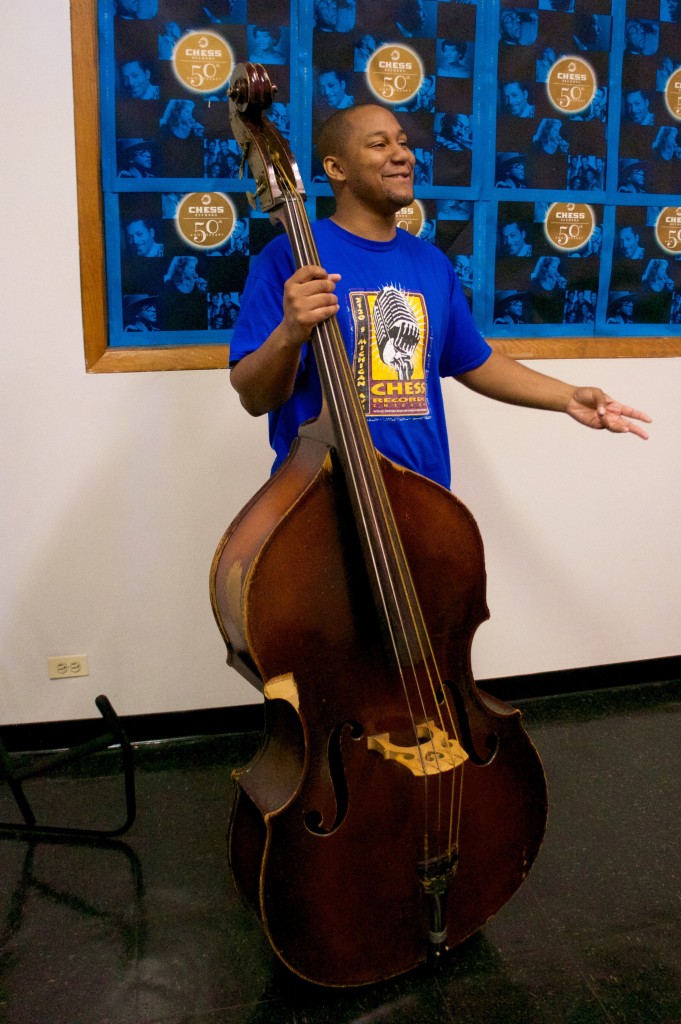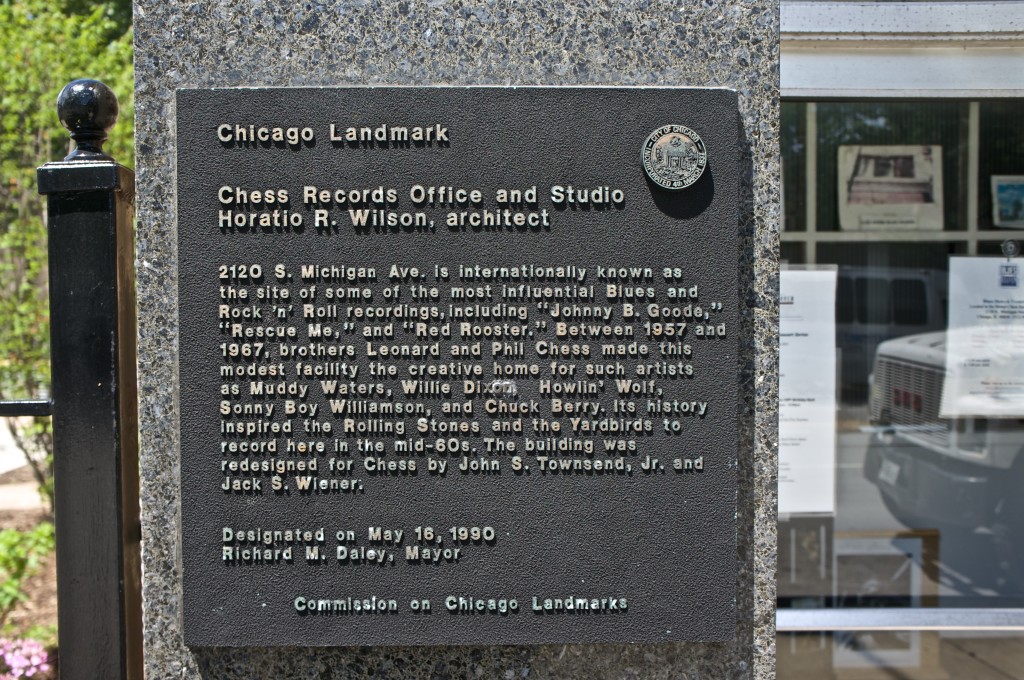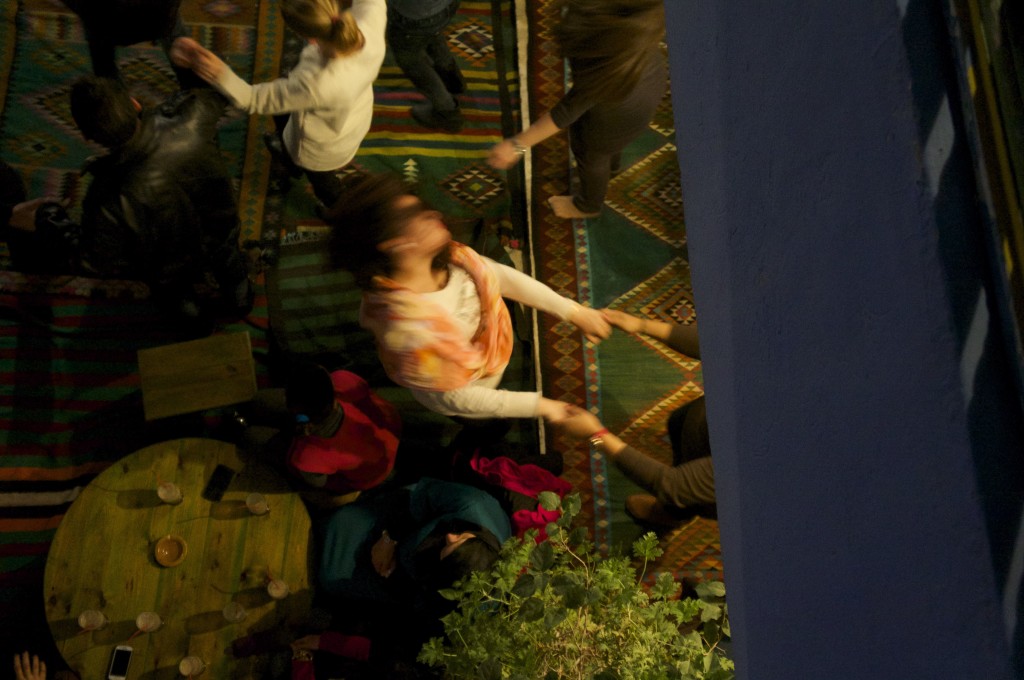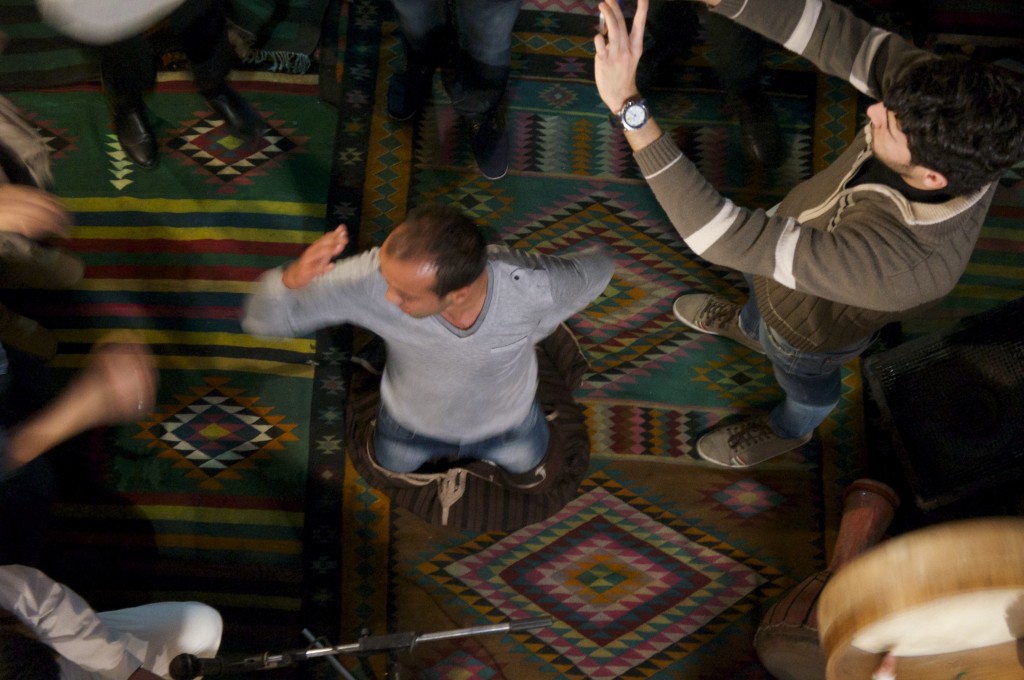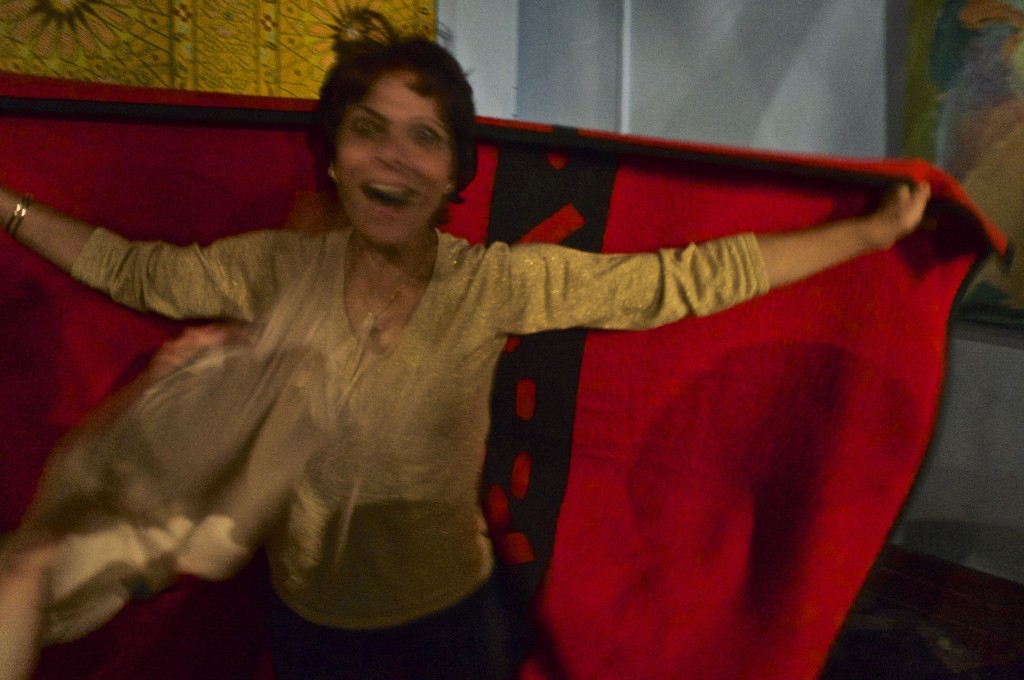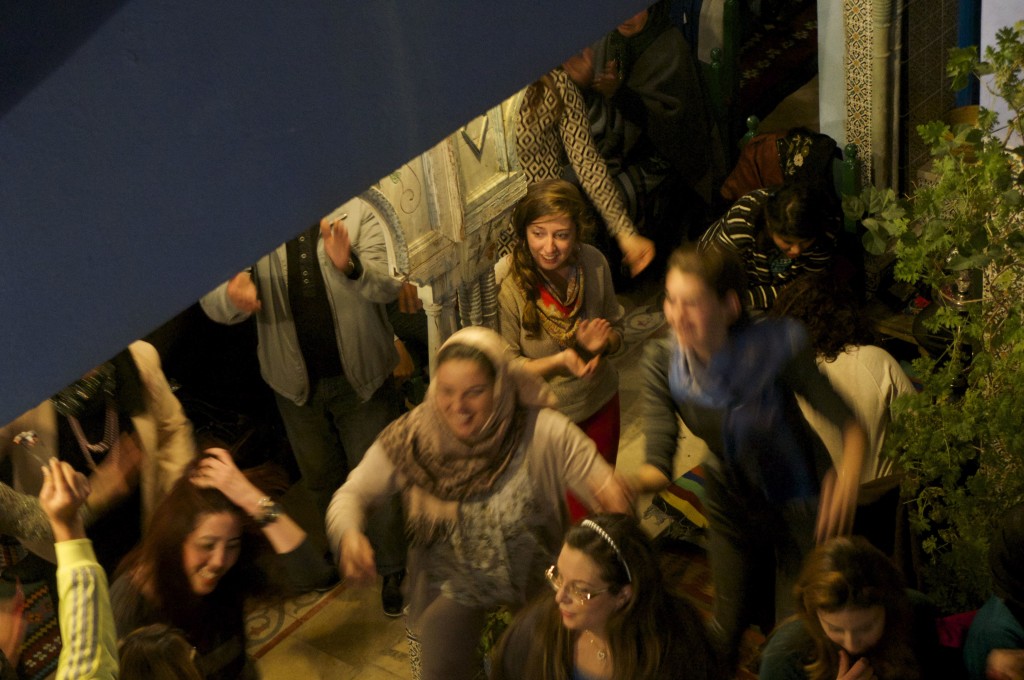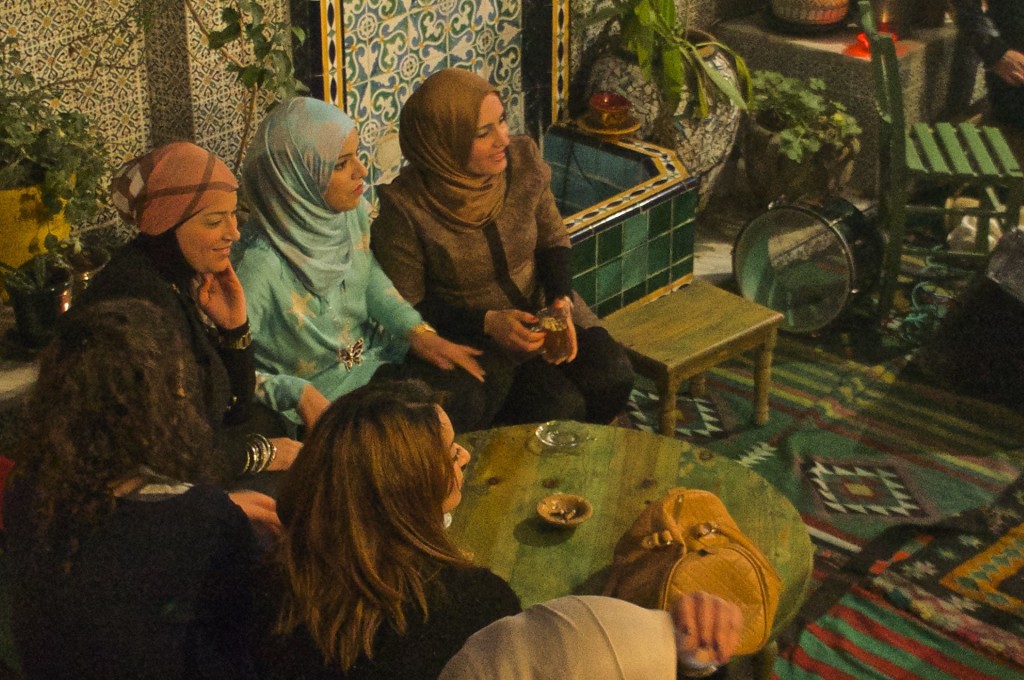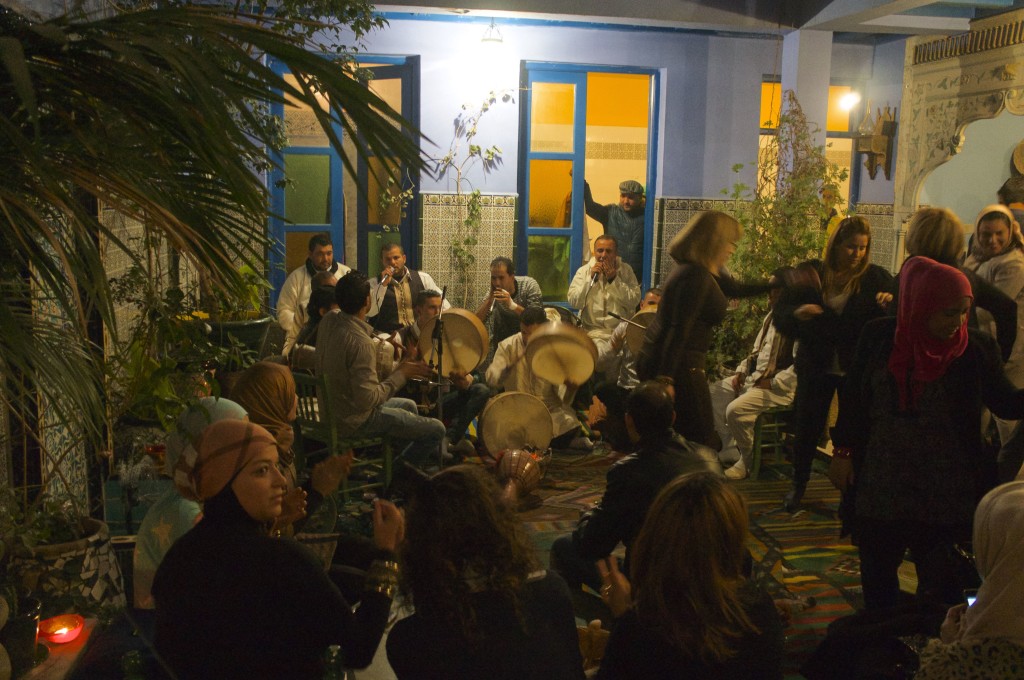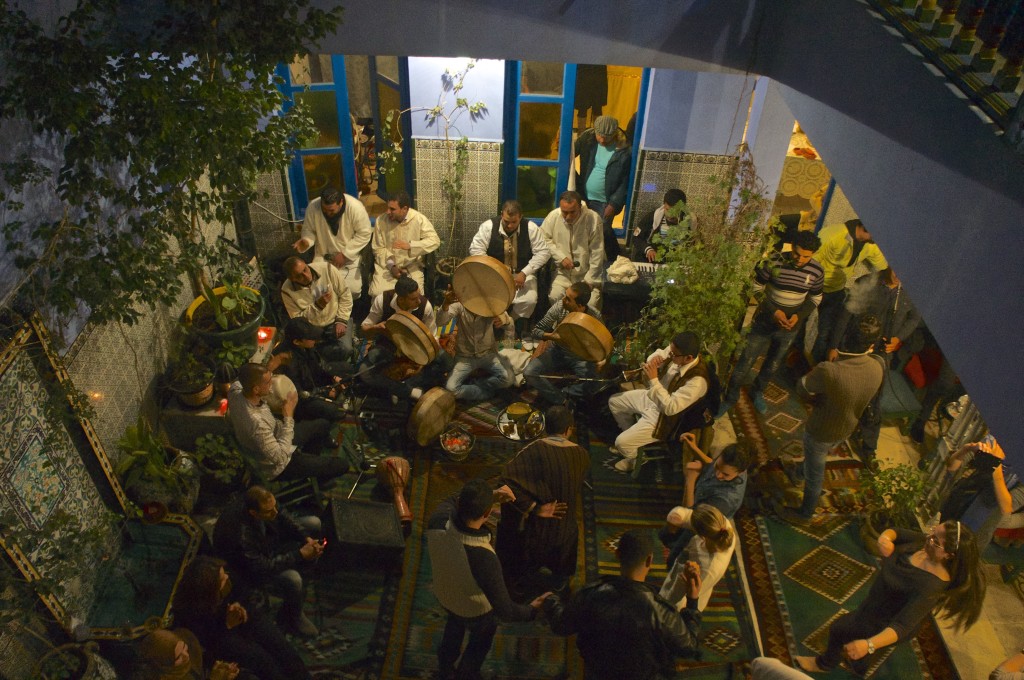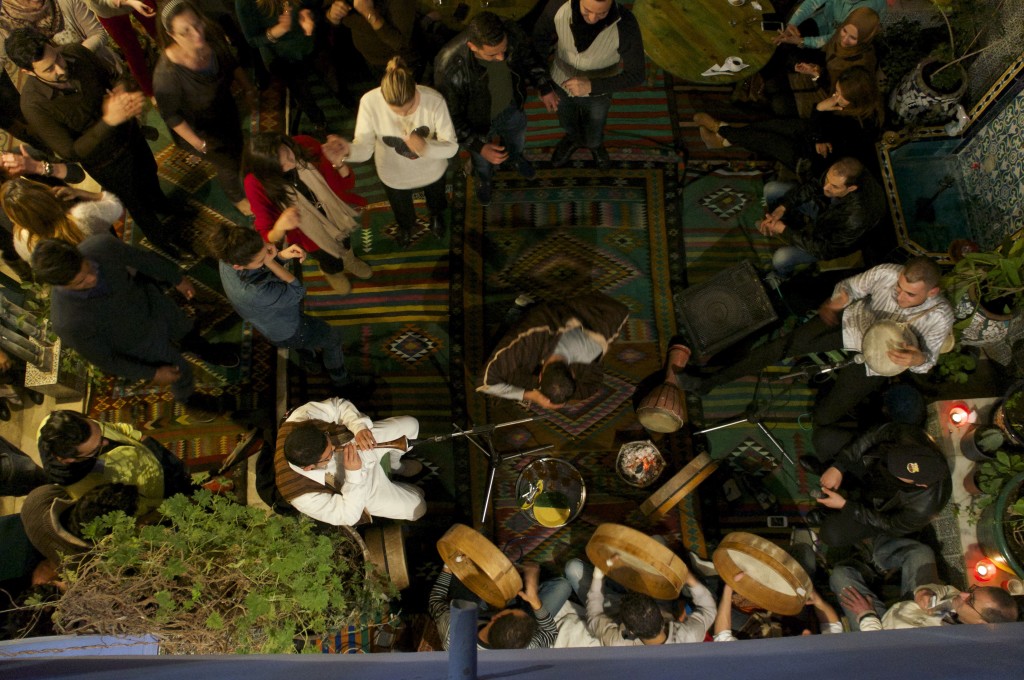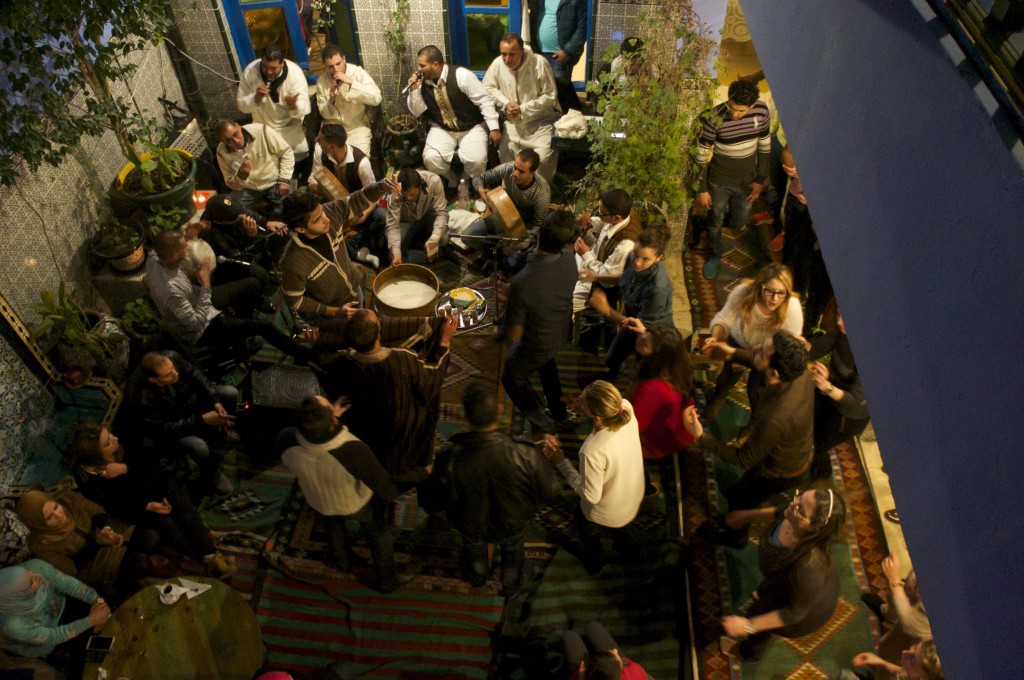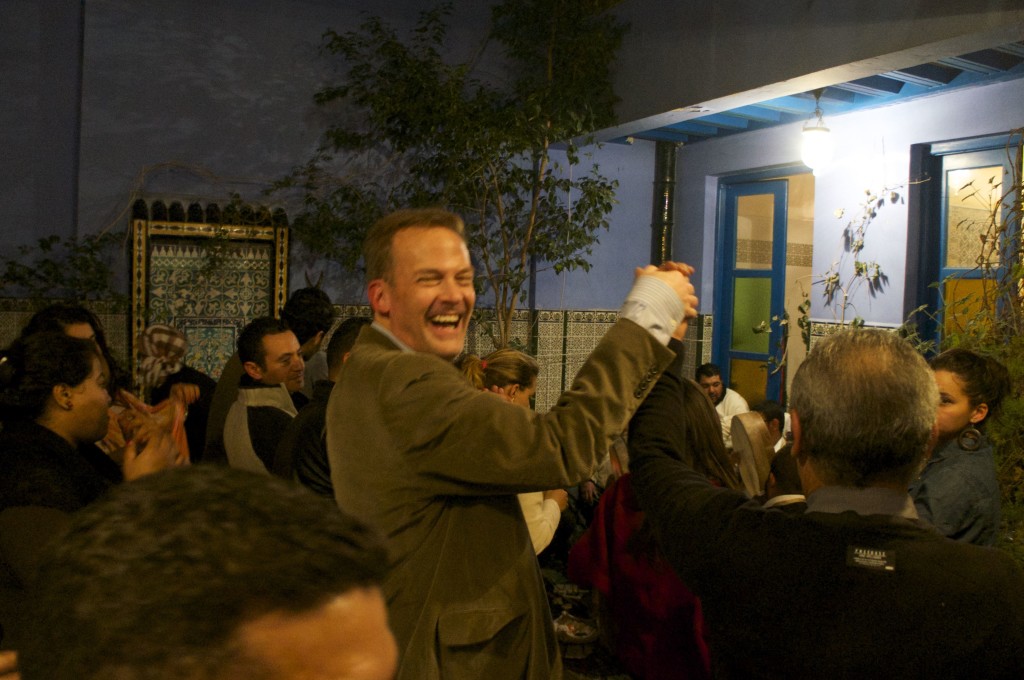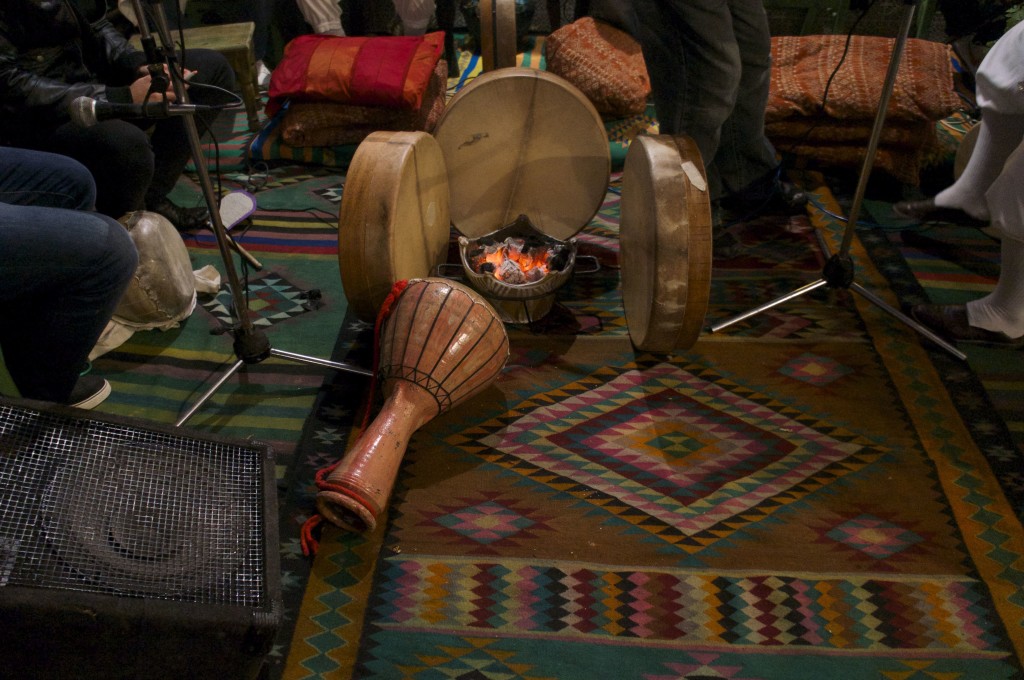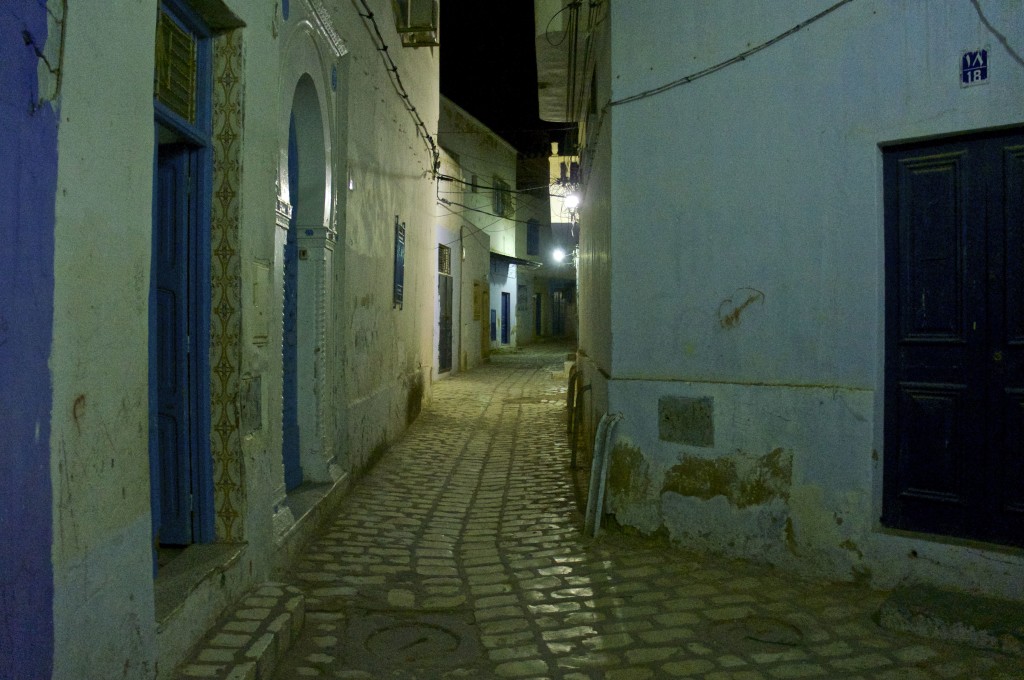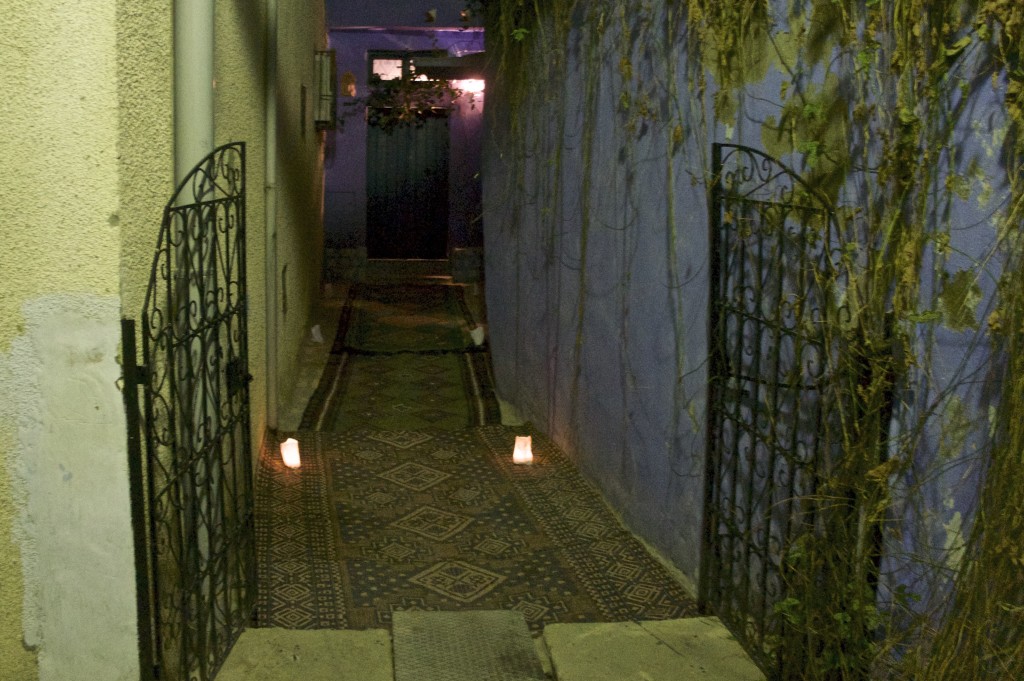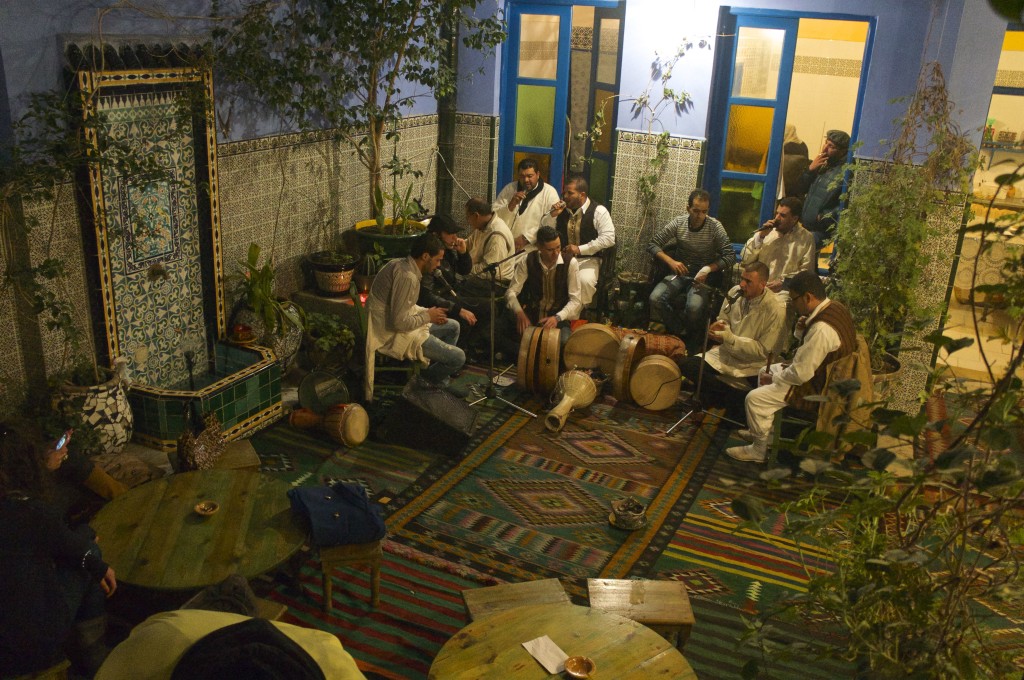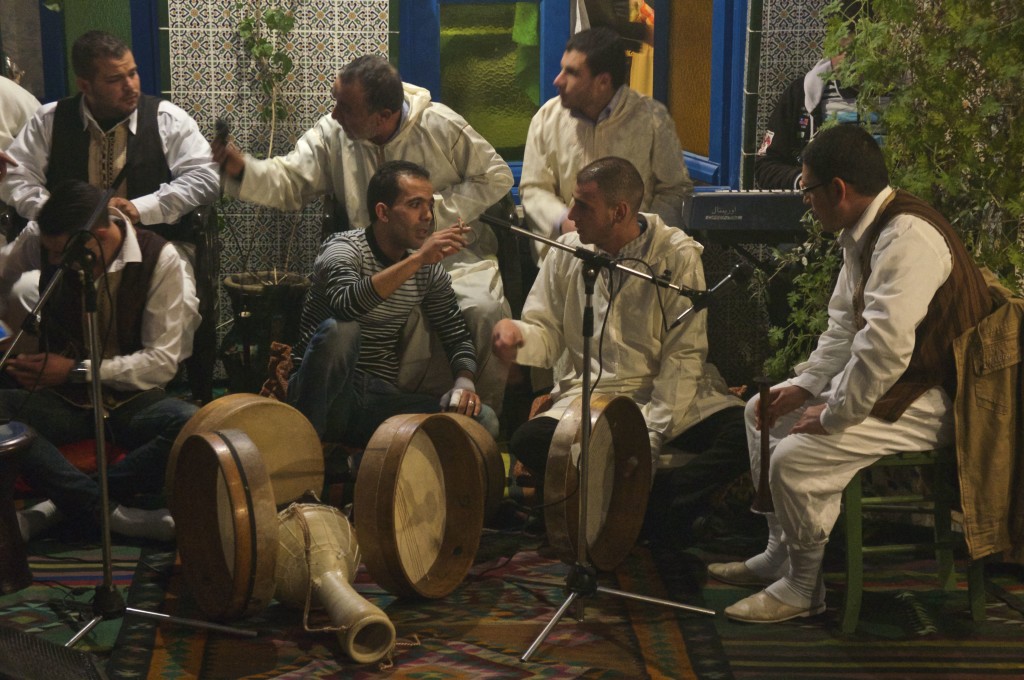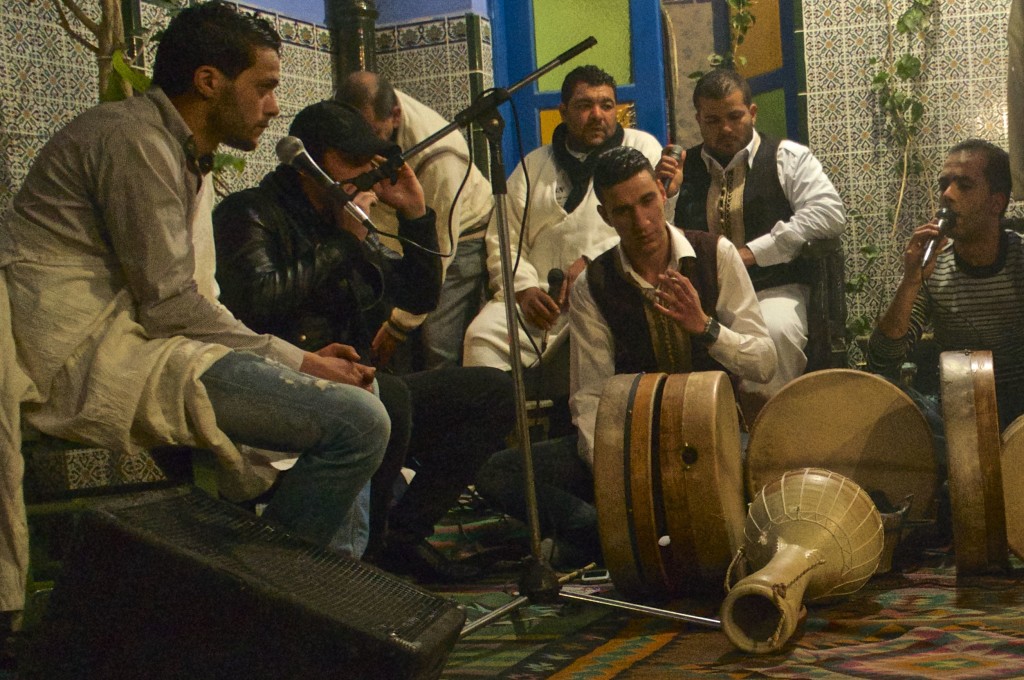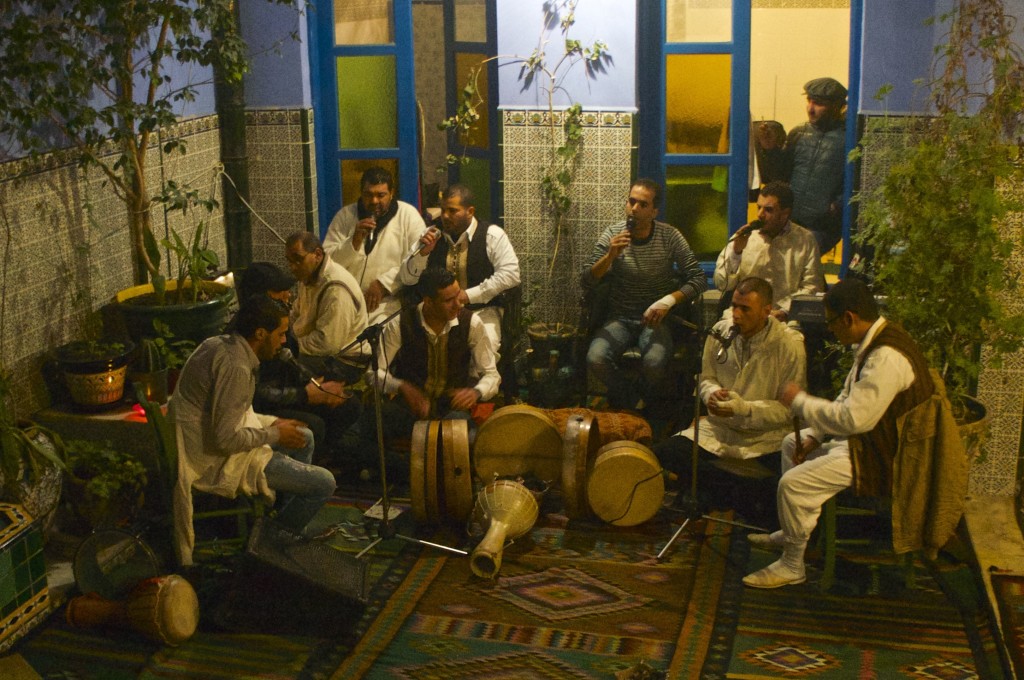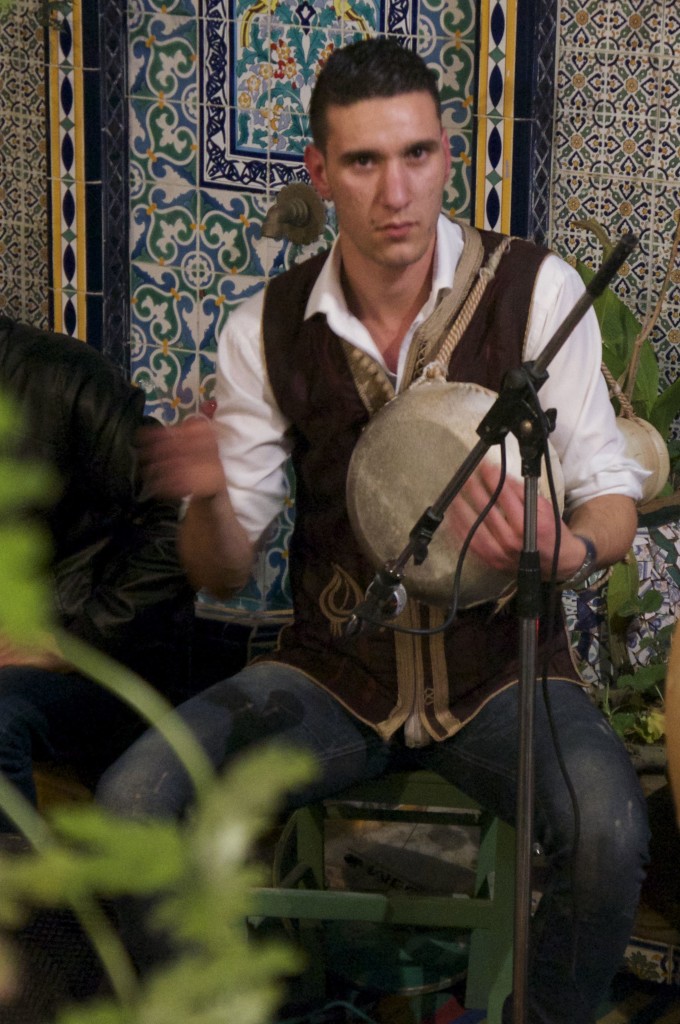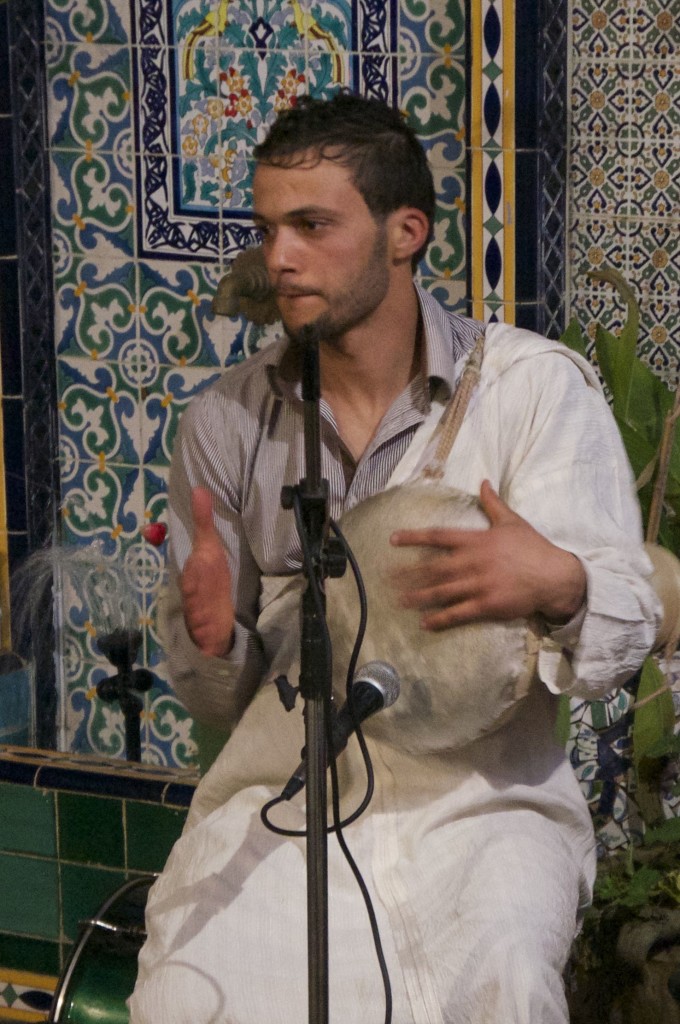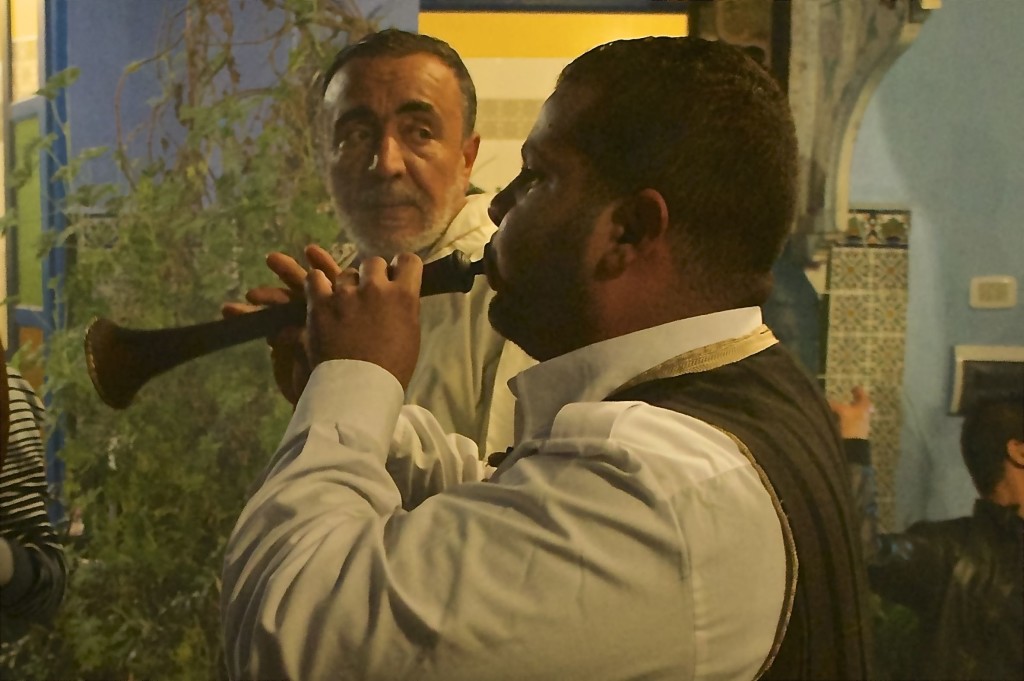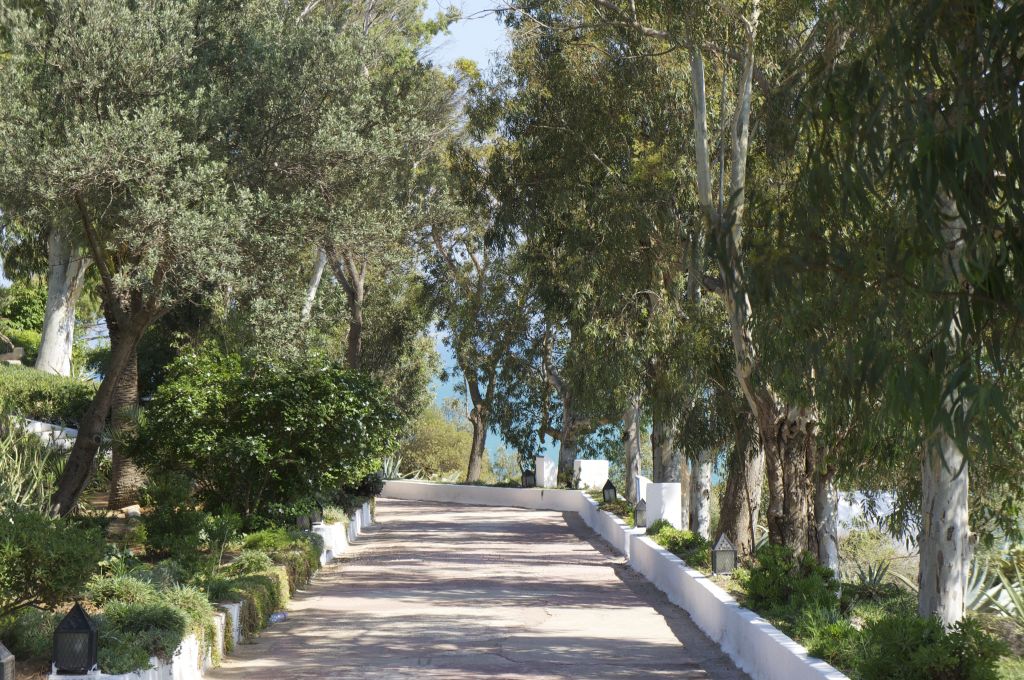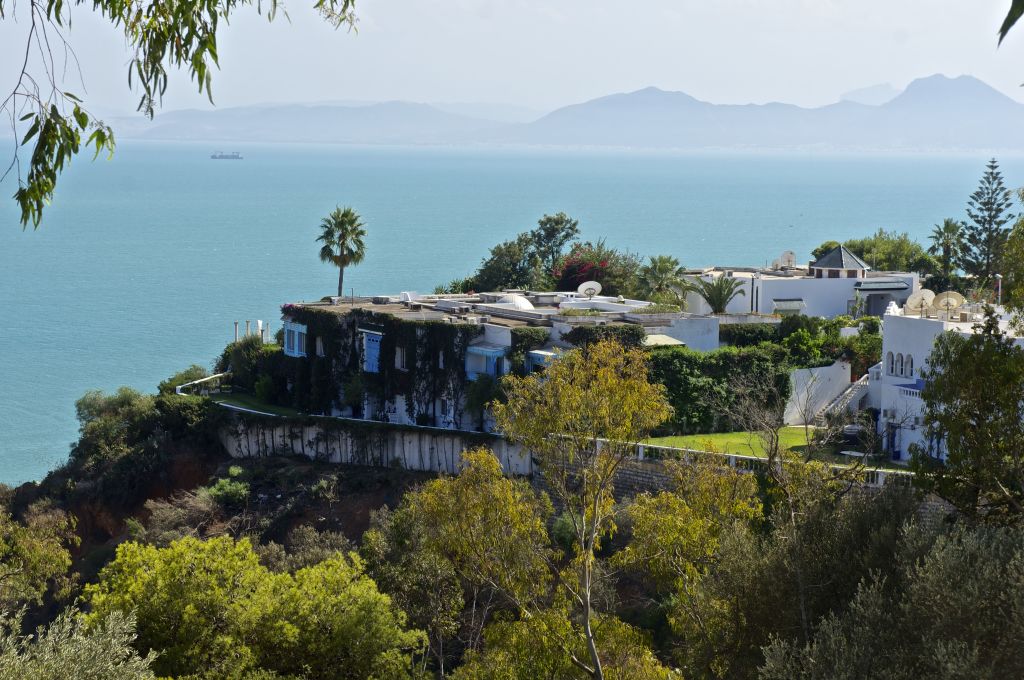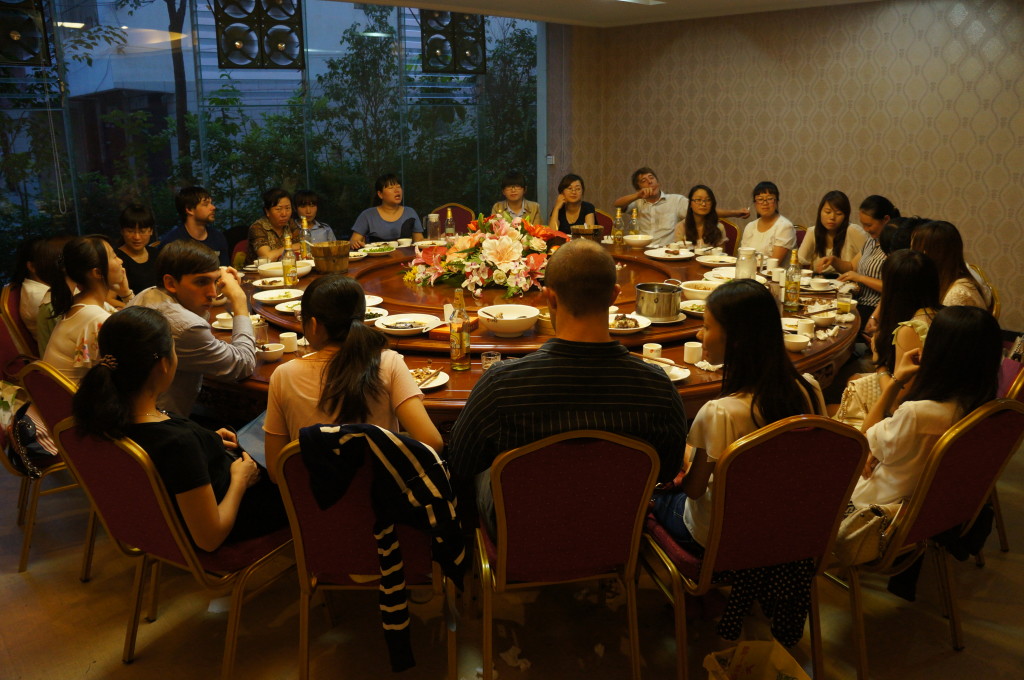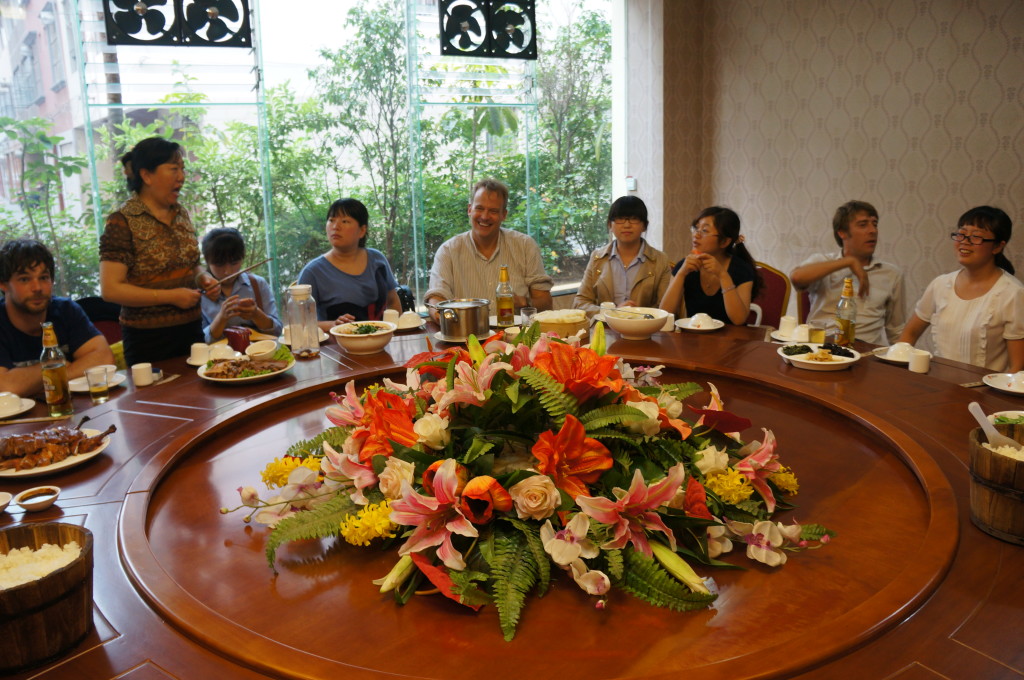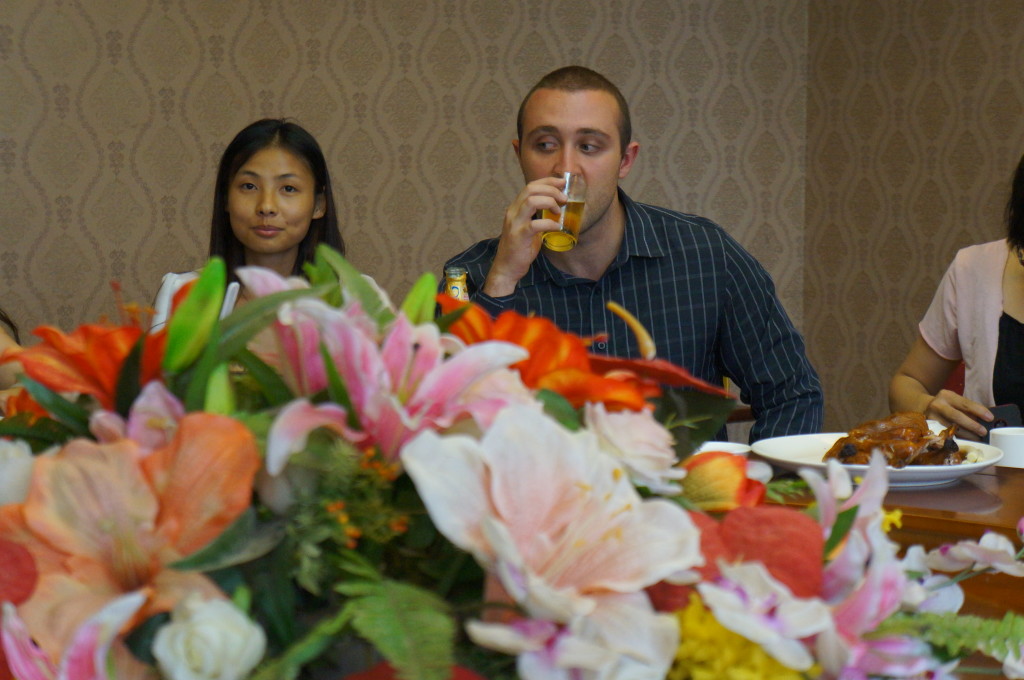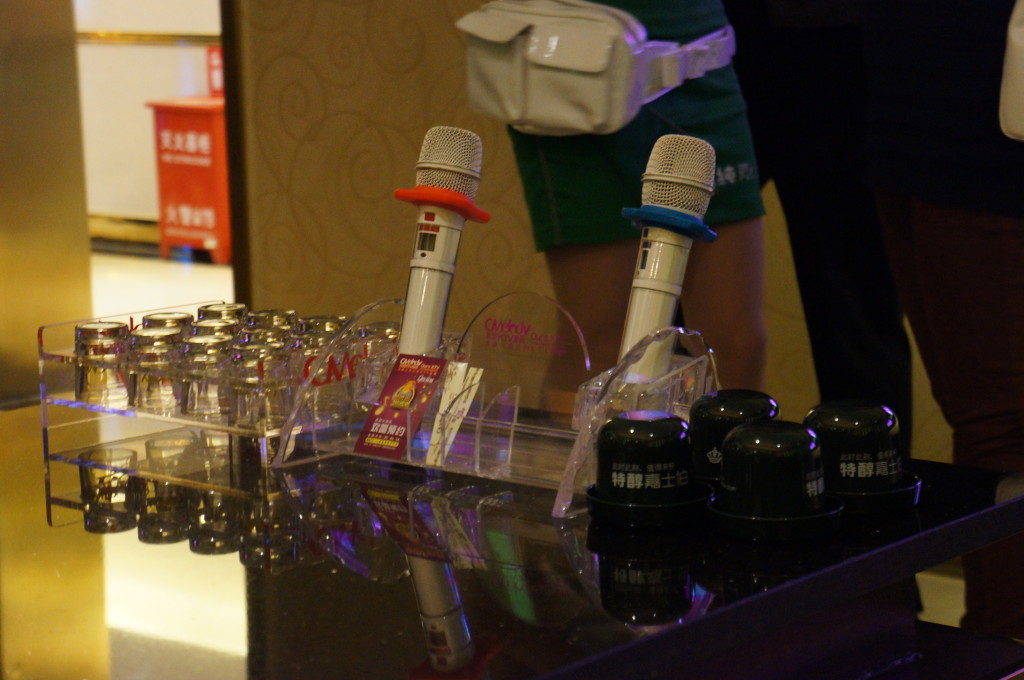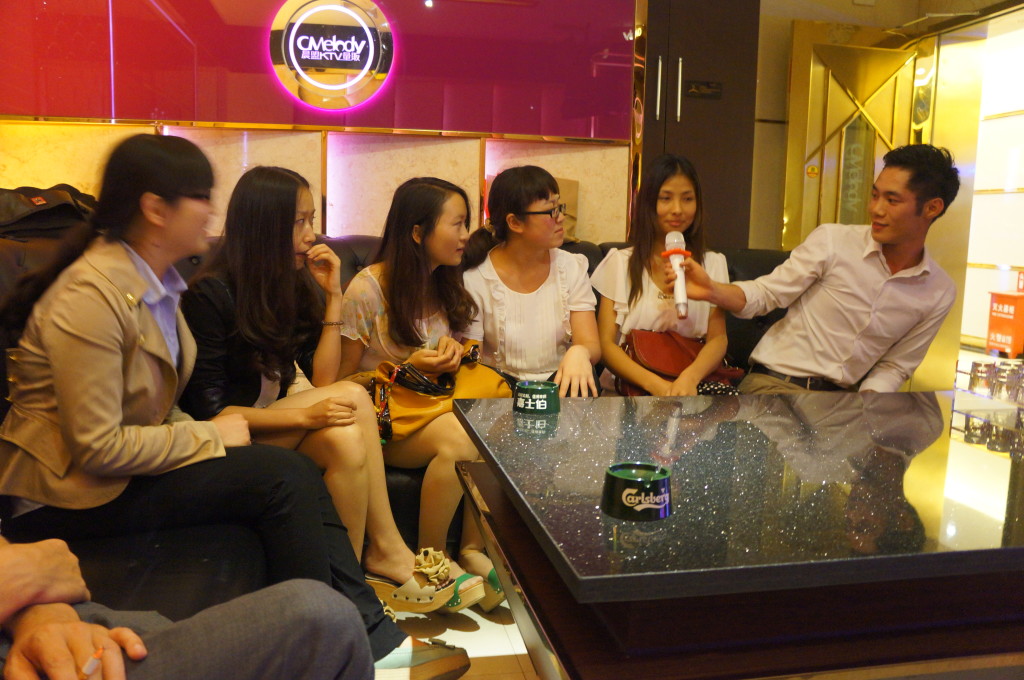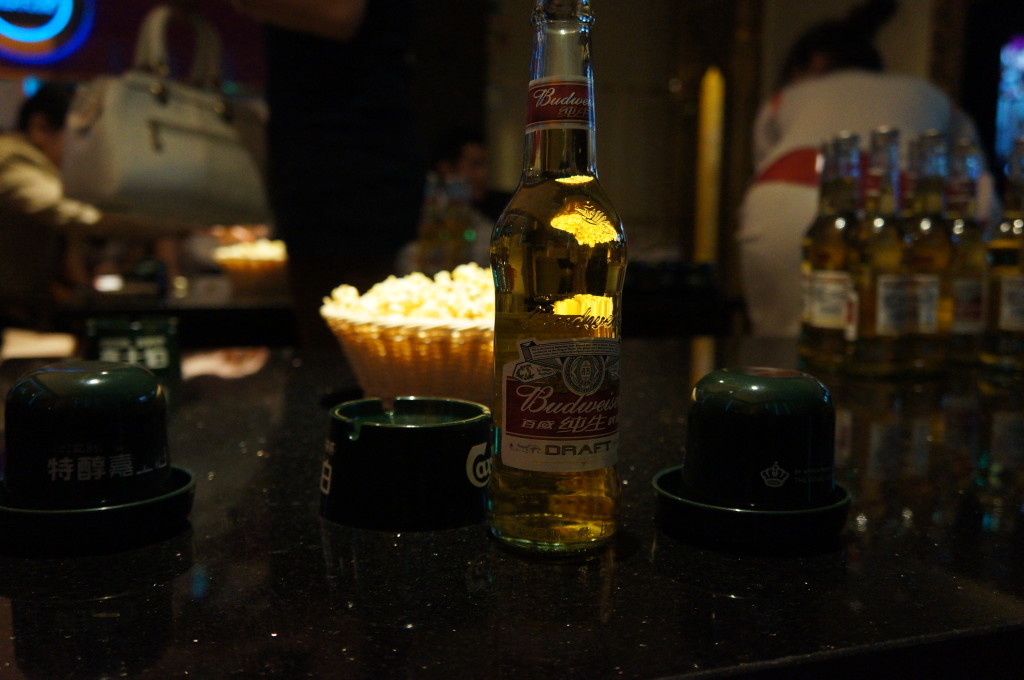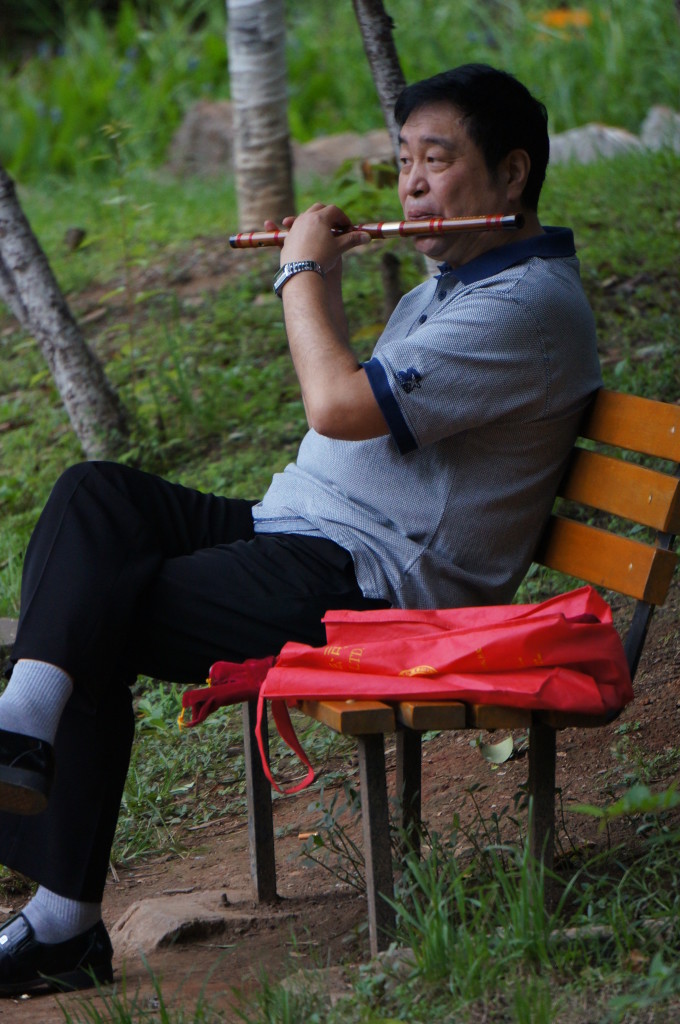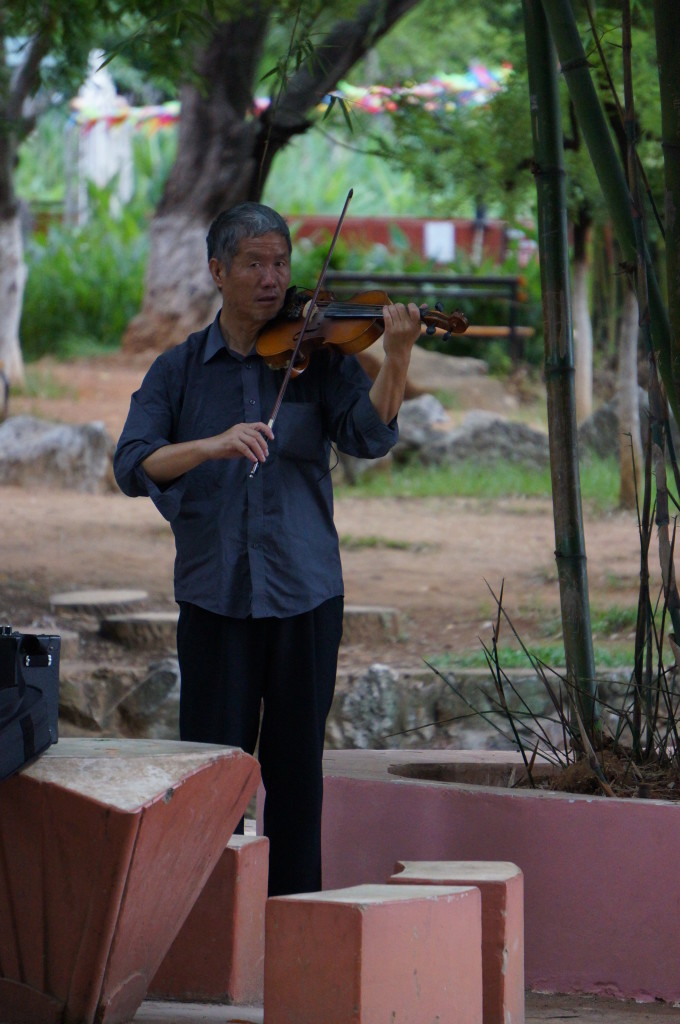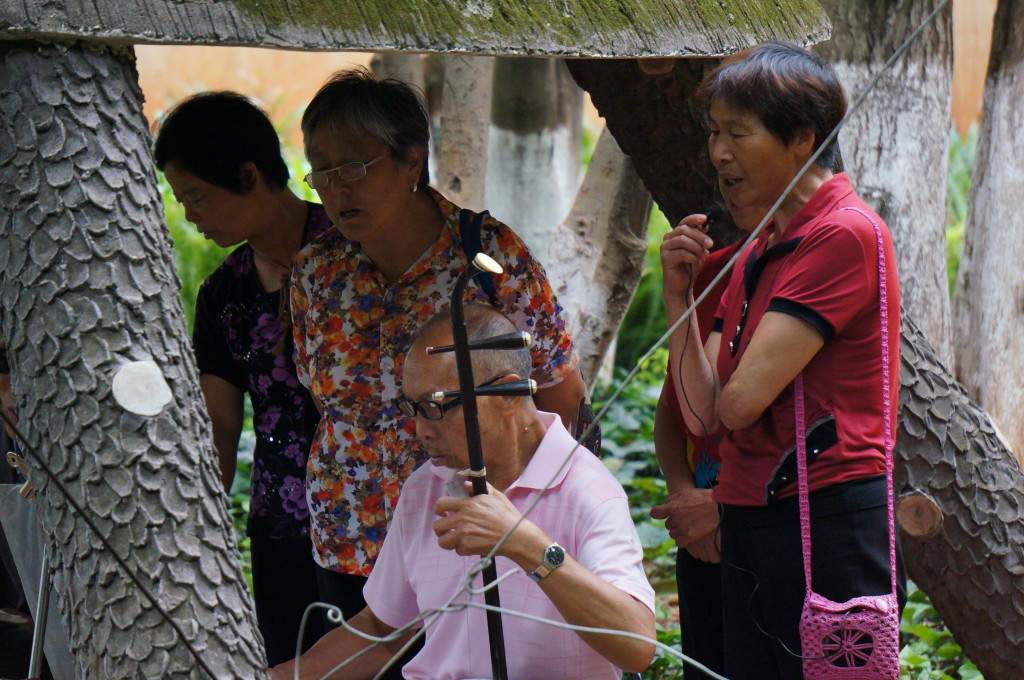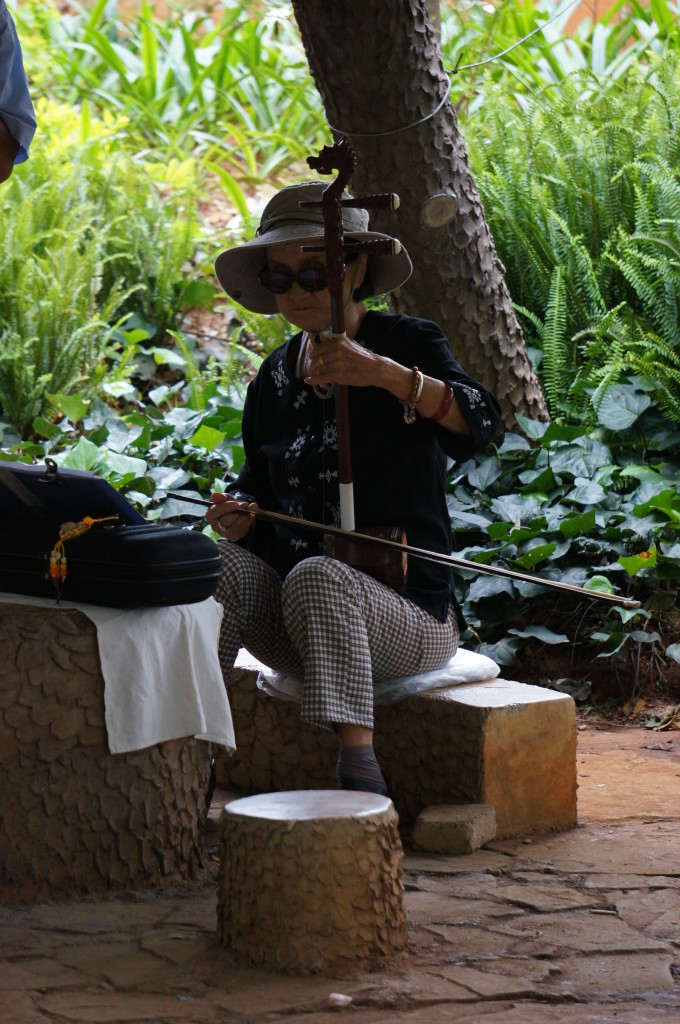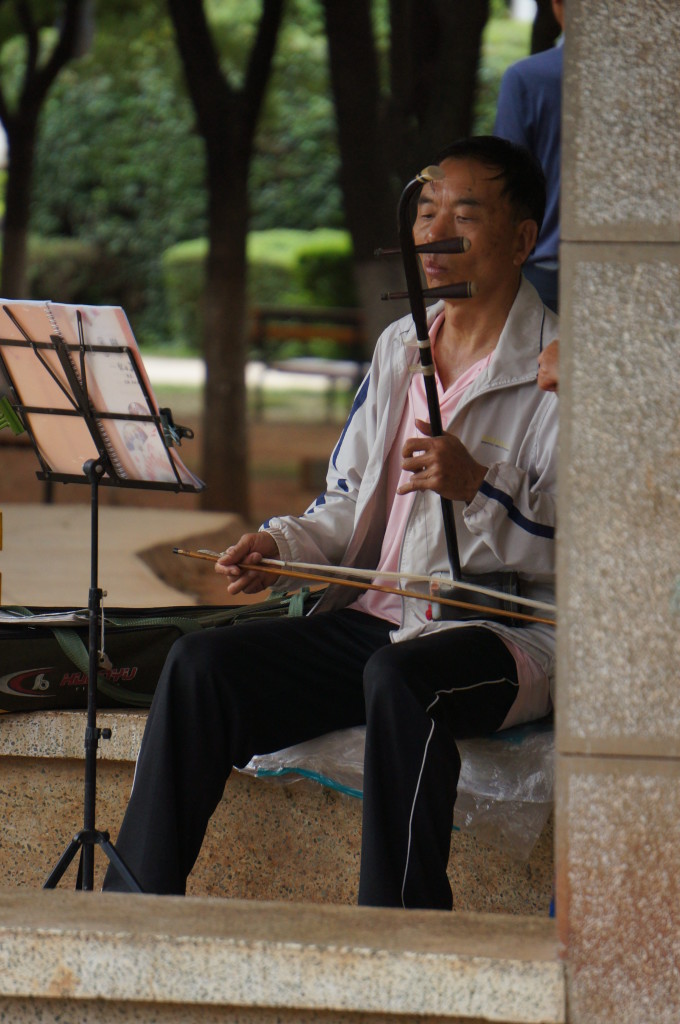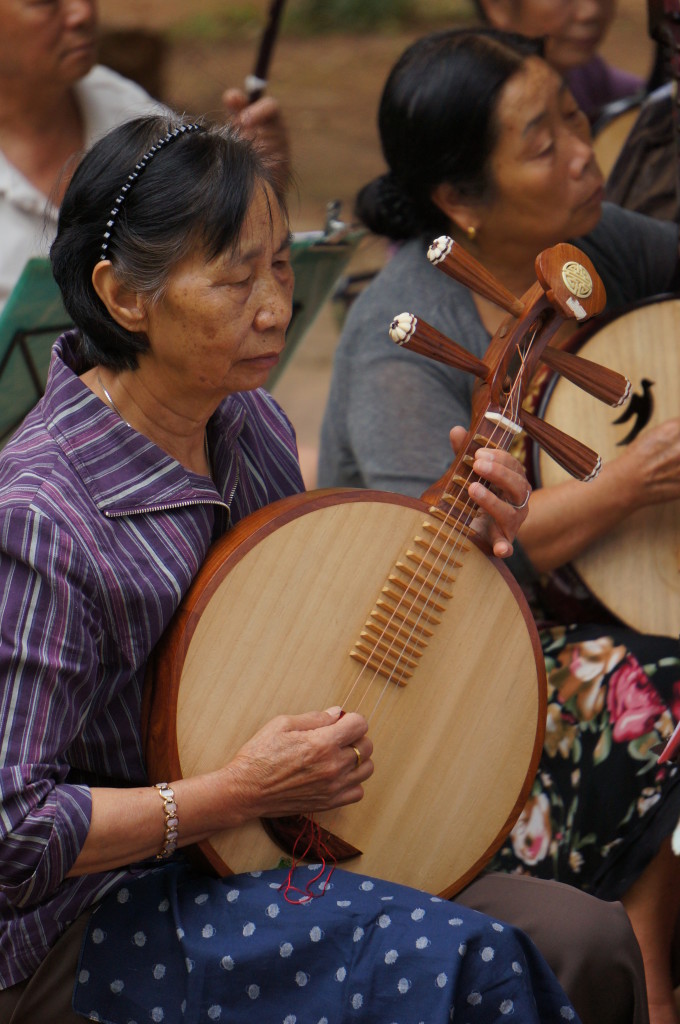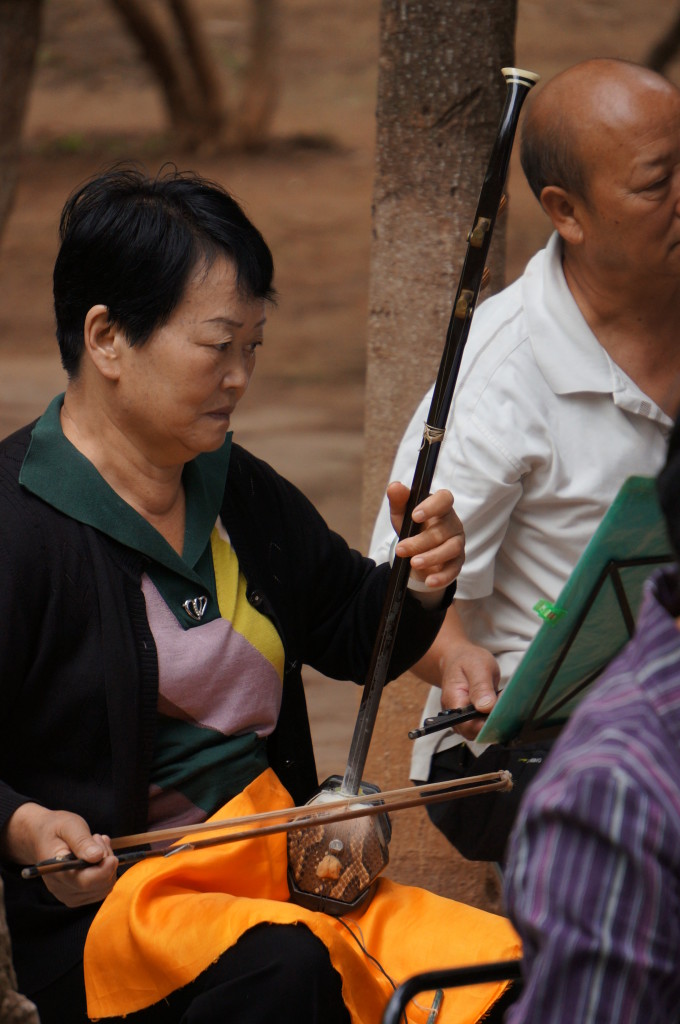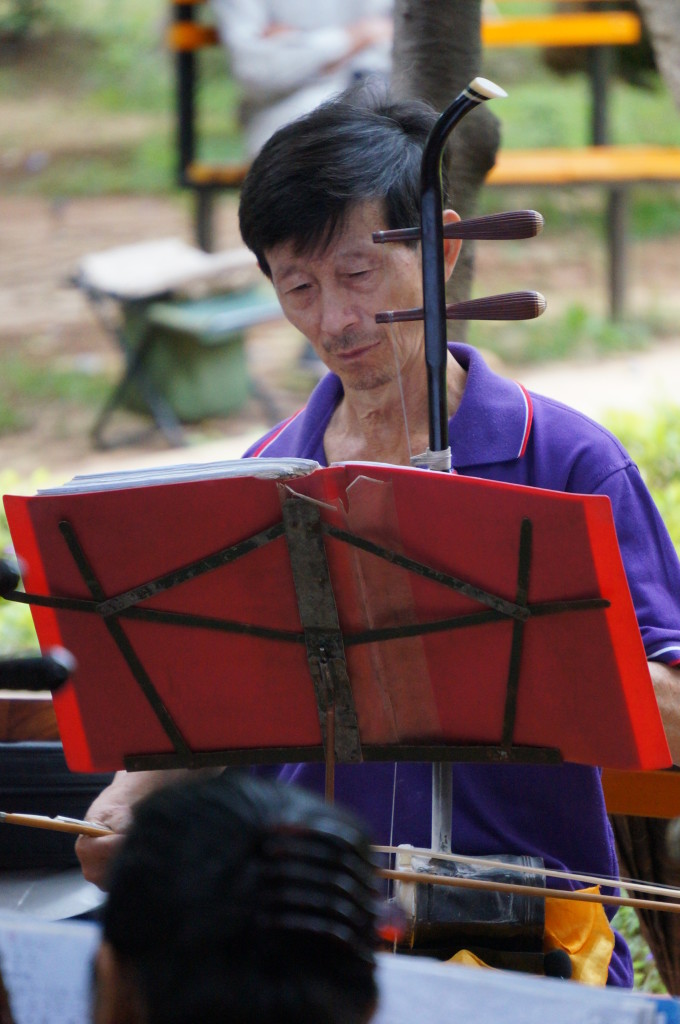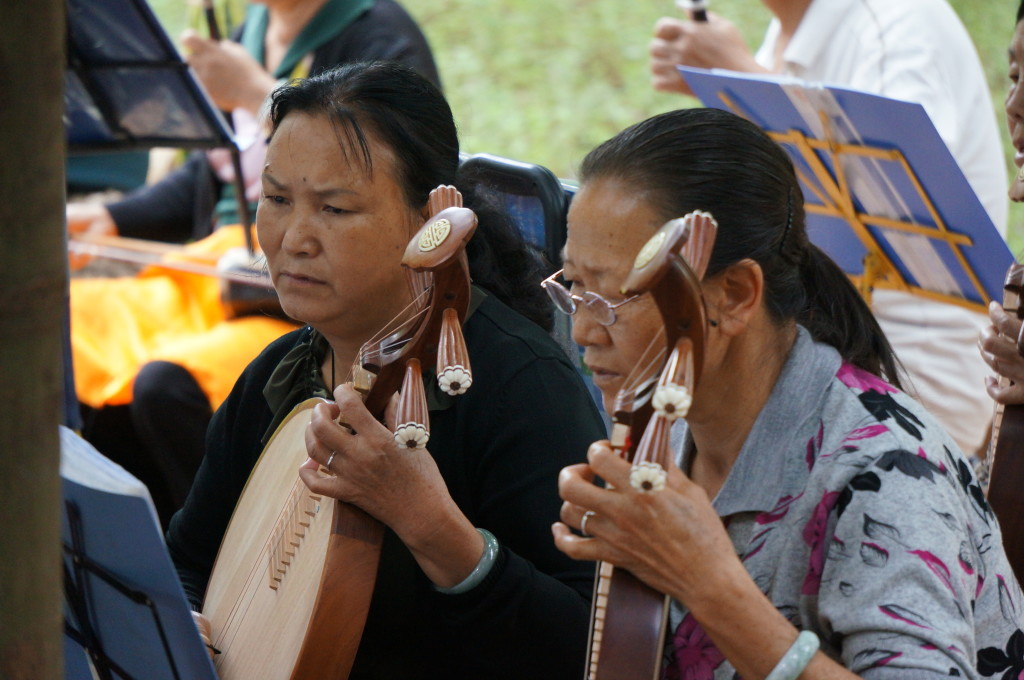I was at El Batey a couple weeks ago and got talking to the guy on the next barstool. This is something I’ve rarely done at other bars, but there’s something about El Batey that brings out my extrovert side. He told me he was in a band called La Maquinaria de Tortura (The Machinery of Torture) and that they were going to be playing a gig in Santurce at a place called El Local. I told him I’d go. Last night, I did.
I’ve never been anyplace quite like El Local. The front half of it consists of a bar and a sitting room that were apparently decorated by someone on work release from the local insane asylum, circa 1980.
It’s the sort of warm and sinister place where you’d be playing a board game and discover that your opponent had turned into a demonic clown or a large bipedal reptile, but you’d just roll the dice and take your turn.
The back half of the building was . . . well, let’s just say that the decorator hadn’t gotten there yet. This made it the perfect setting for the propulsive punk of La Maquinaria de Tortura. The sound was old school: 90 second songs screamed out incomprehensibly by sweaty shirtless men while a distortion-heavy guitar bashes out the same two chords over and over and over and…
…and meanwhile, people who will always be cooler than you no matter how many tats you get or indie films you direct sit by impassively digging the scene.
On the way out, I saw this sign for future fun at El Local.
Not quite sure what that’s all about, but I might give it a try. It’s a strange place. And so of course, I want to go back.
